This is a continuation from Safari to Kenya – Ol Kinyei Conservancy (Day 2) that ended at Porini Cheetah Camp on Saturday, March 12.
Recap: On Saturday, we had our first full day at Ol Kinyei and Porini Cheetah Camp. We had great Morning and Afternoon Game drives with Joel and Phillip our guides. We saw numerous animals and birds on both the drives. We also went on a short Night Game Drive and saw our first fully grown male lions albeit very drowsy in one case and fast asleep in another! We went to bed early again, knowing we were headed to the Masai Mara National Reserve the succeeding day.
Ol Kinyei Conservancy – The Morning (Sunday, March 13)
We were up early again on Sunday, excited to be finally visiting the Masai Mara. After downing some coffee and tea, we headed to the camp’s front entrance, stopping off at the fire pit to say “Hi” to our Masai friends. By 0630 we were on the road with Joel and Phillip; this time I was better dressed for the morning chill. In addition, Joel and Phillip pointed out some thick ponchos stored behind the seat that doubled as rain gear that were most welcome! Thus, fortified against the chill, we enjoyed the crisp morning air, and the sight of animals stirring from their night’s rest.
We had planned on taking the highway to the park rather than driving through Naboisho Conservancy, which would have been a much longer drive, instead we opted to drive back that way. It was important to get to the Reserve early so that we had the best sightings when it was cooler. On the way to the highway, we drove back the way we had entered the conservancy 2 days ago. On the way, we spotted a few animals: a pair of hyenas, some giraffe, and a few zebras, along with the usual impala, gazelle, elands, topis etc. Within about 20 minutes, we exited the conservancy and, on the highway, mentally thanking Joel, and Phillip for the loan of the ponchos! It was quite chilly at 50 mph in an open vehicle.



The Masai Mara (Sunday, March 13)
After a half hour drive that took us through a couple of villages, we were at the Sekenani gate to the Masai Mara Reserve, named after the village, just outside. We stopped there to work through the formalities of the permit. In the meantime, I used the facilities – not the greatest but serviceable! By the way, unlike some of the other Reserves and Parks in Kenya, this particular reserve was managed by Narok County.

A few minutes later, we were back in the vehicle, and we headed into the reserve. The road was another dirt track but easy to navigate; clearly, it was well maintained by the county. There was signage and what surprised me was the distance posted to various points in the Reserve. We saw signs for many lodges and the distances were 50km or even more in some cases! I knew that the reserve was over 1500 square kilometers, but the implications of how far one had to travel had not quite registered in my mind. The track itself was bordered initially by tall grass and we couldn’t see a whole lot. But after a couple of minutes, we went up a small hill and then the whole magnificence of the African Savanna was visible! What a sight that was – miles upon miles of grassland with the occasional tree, and with hills in the distance! I looked at the scene with my mouth open. The grass was not your garden variety grass either. This was grass that frequently went over 6 feet tall and looked more like a sea of grass in the light wind than anything else. Words simply cannot do justice to the sight – see some of the photos in this post to get a better sense of what it looked like.
On the track, we saw a pair of three-banded Plovers, then a pair of grey-crowned cranes; off it, to our right as we drove roughly west, we saw a herd of elephants at a tree line in the distance. A few minutes later, we spotted more elephants close to the track but obscured by the tall grass. We then saw a herd of Hartebeest and a lone, Black-bellied Bustard.
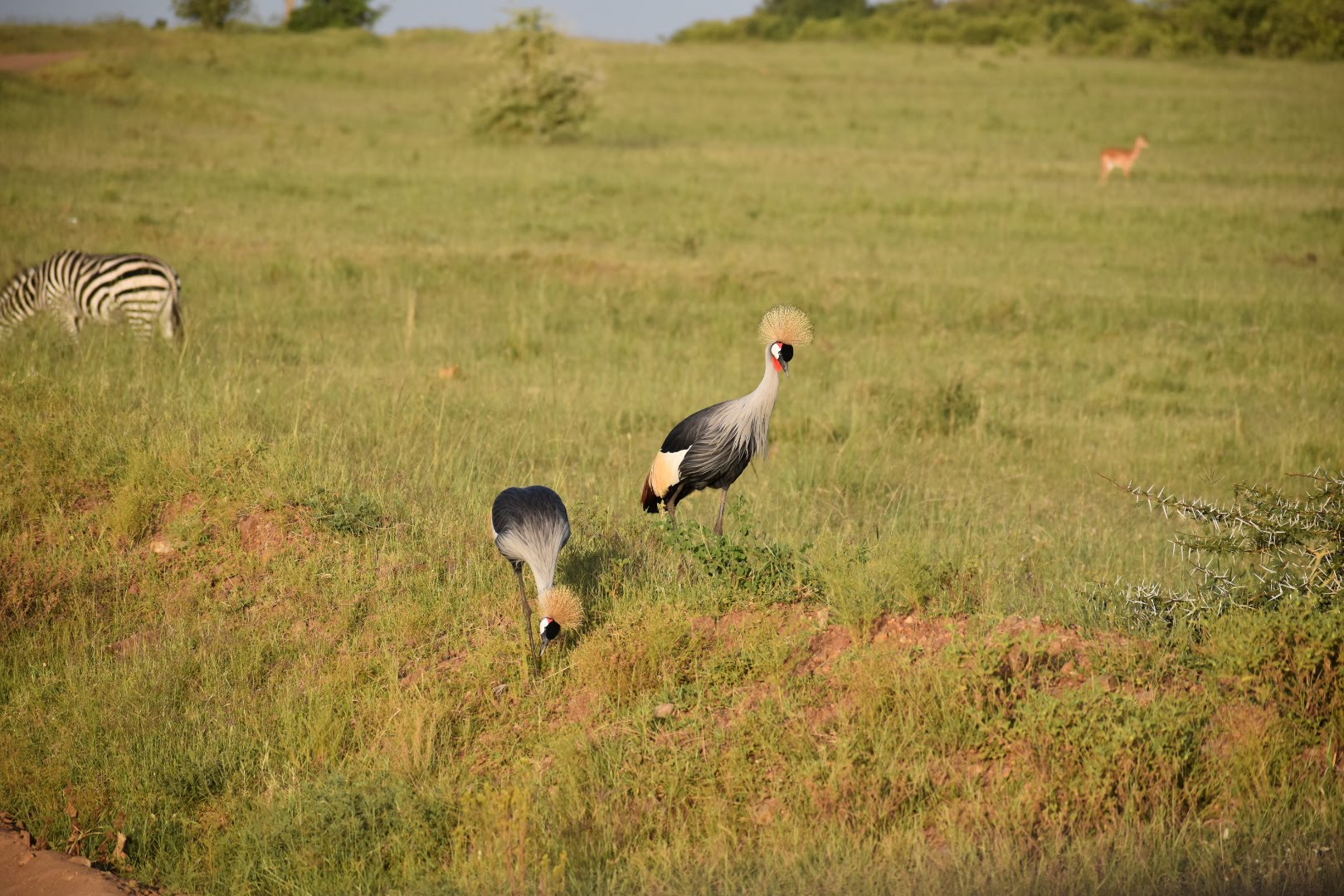
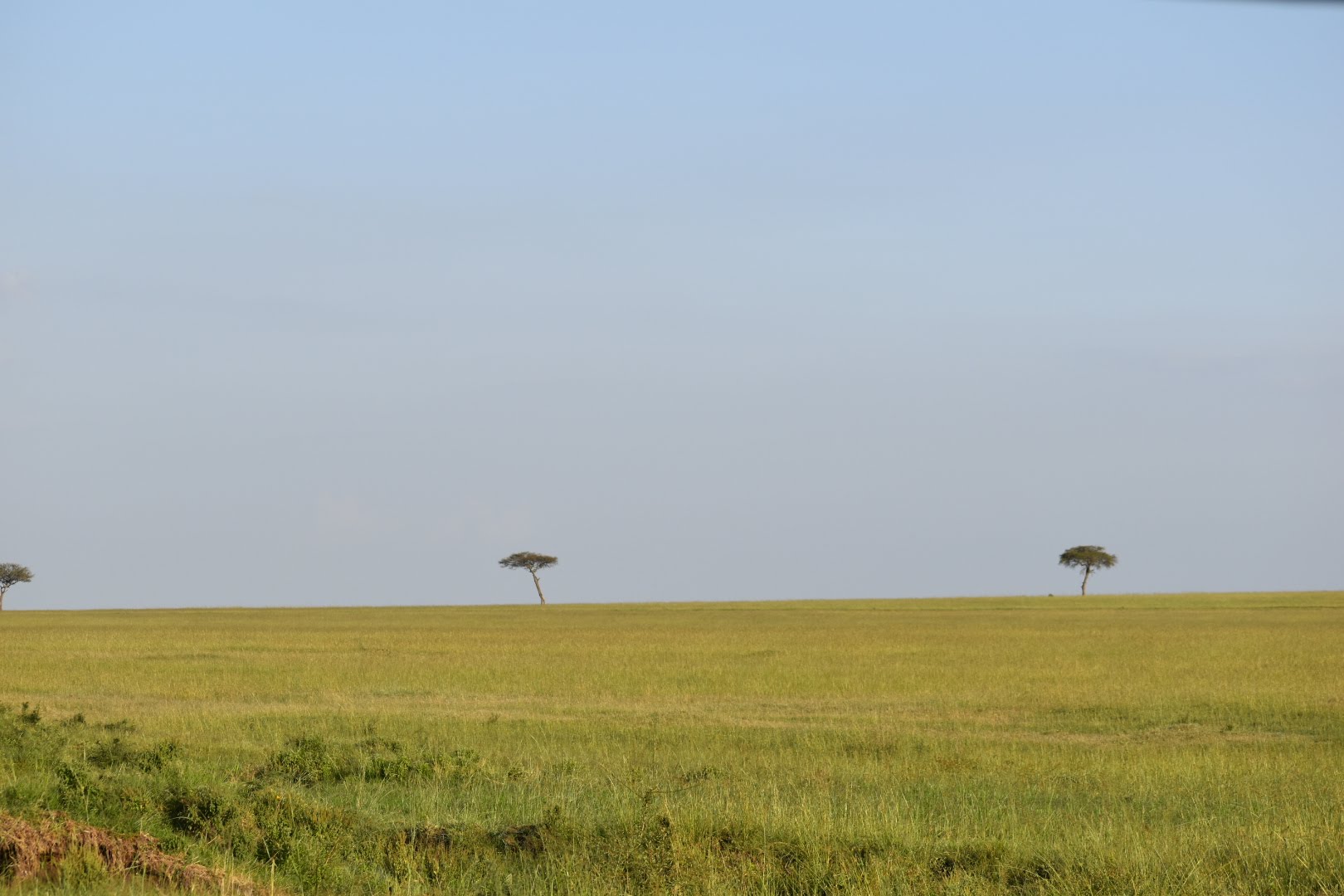
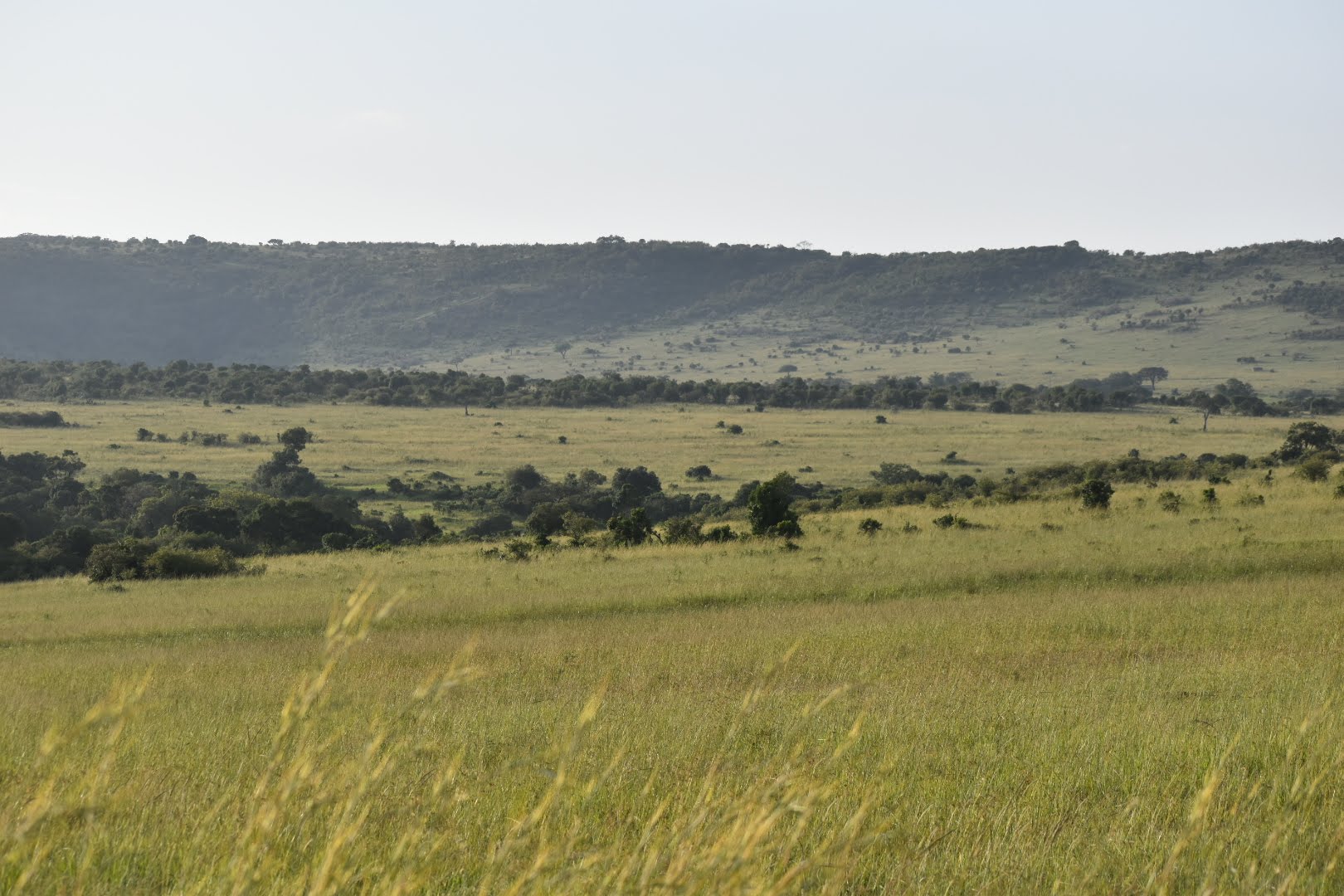

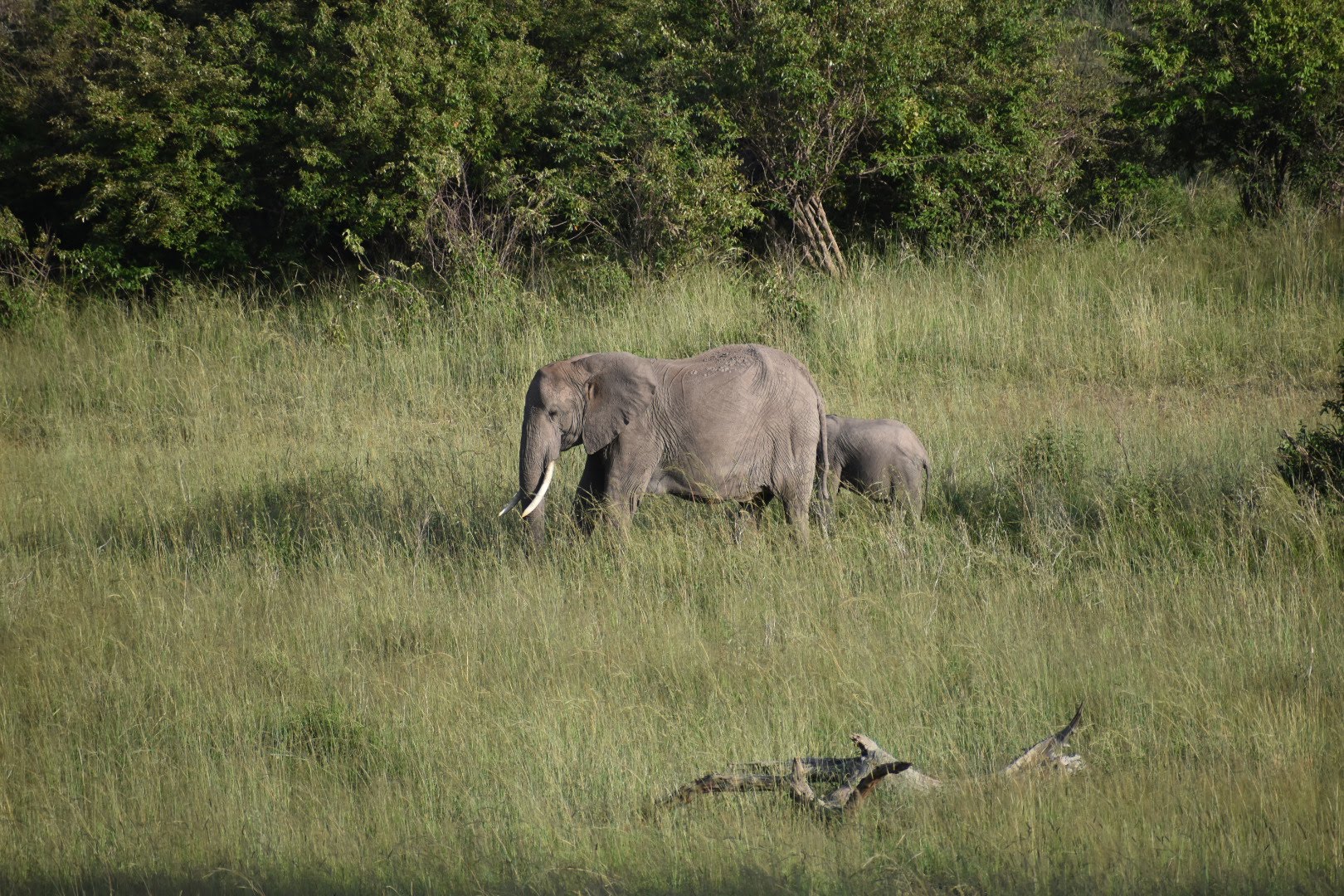
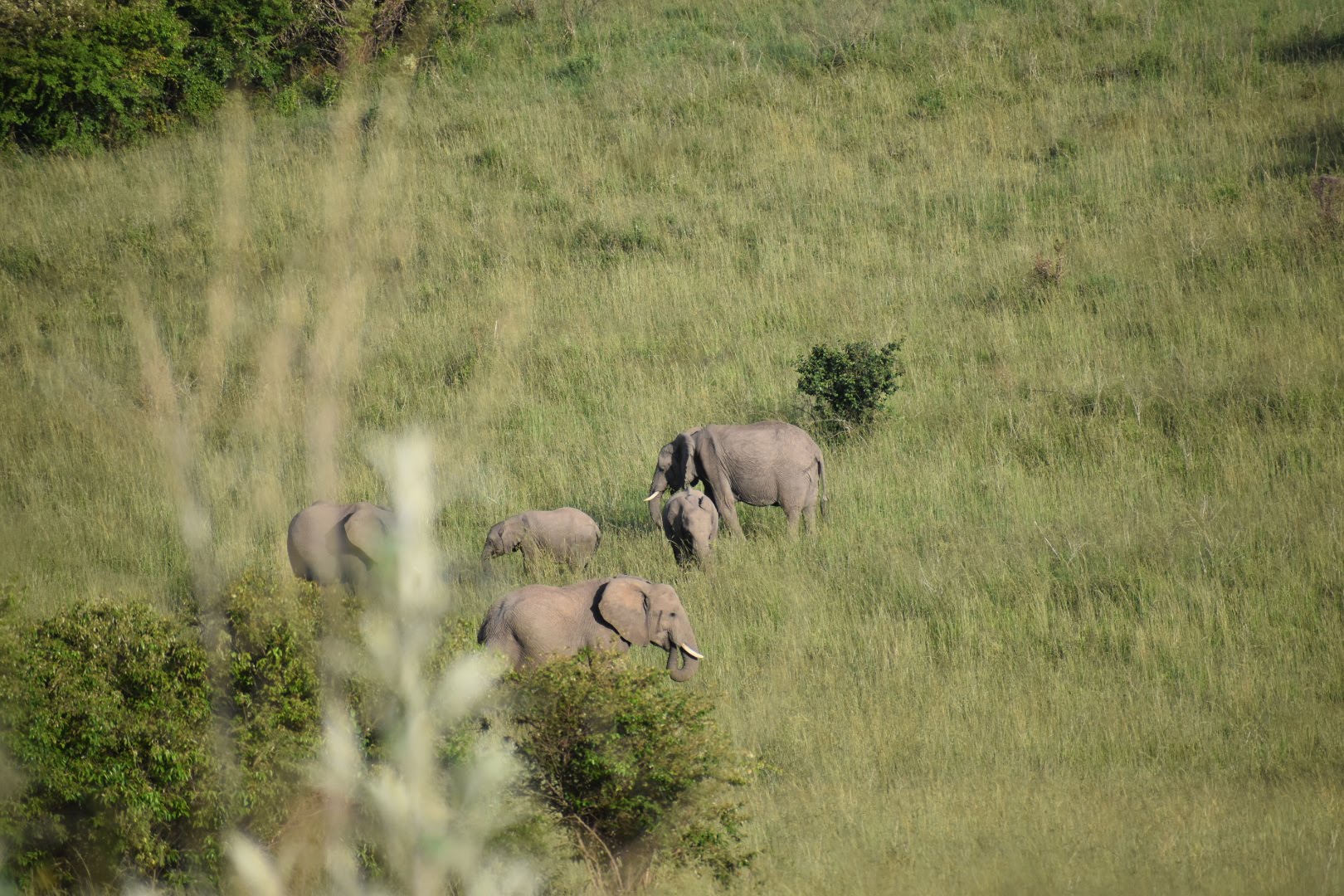
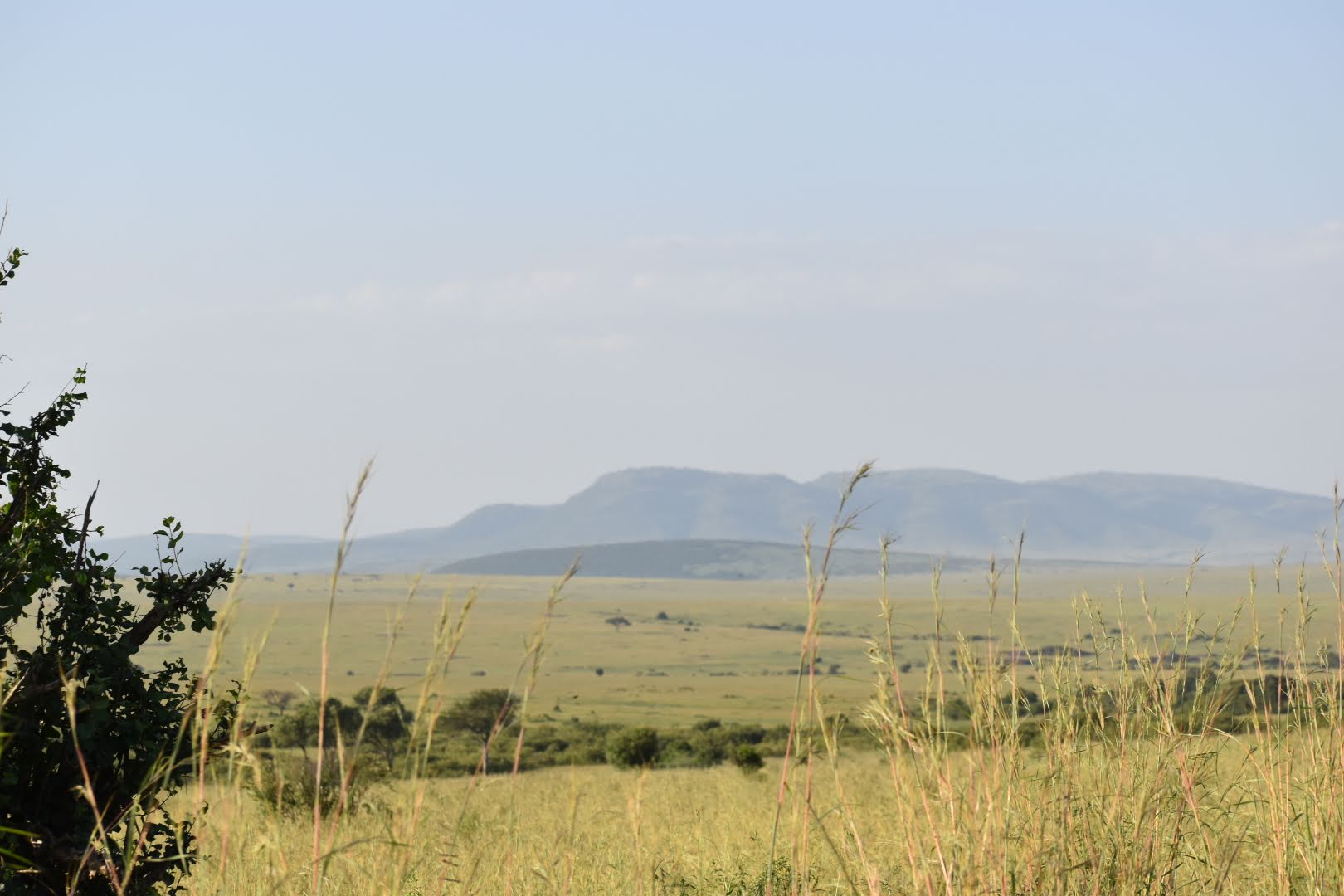
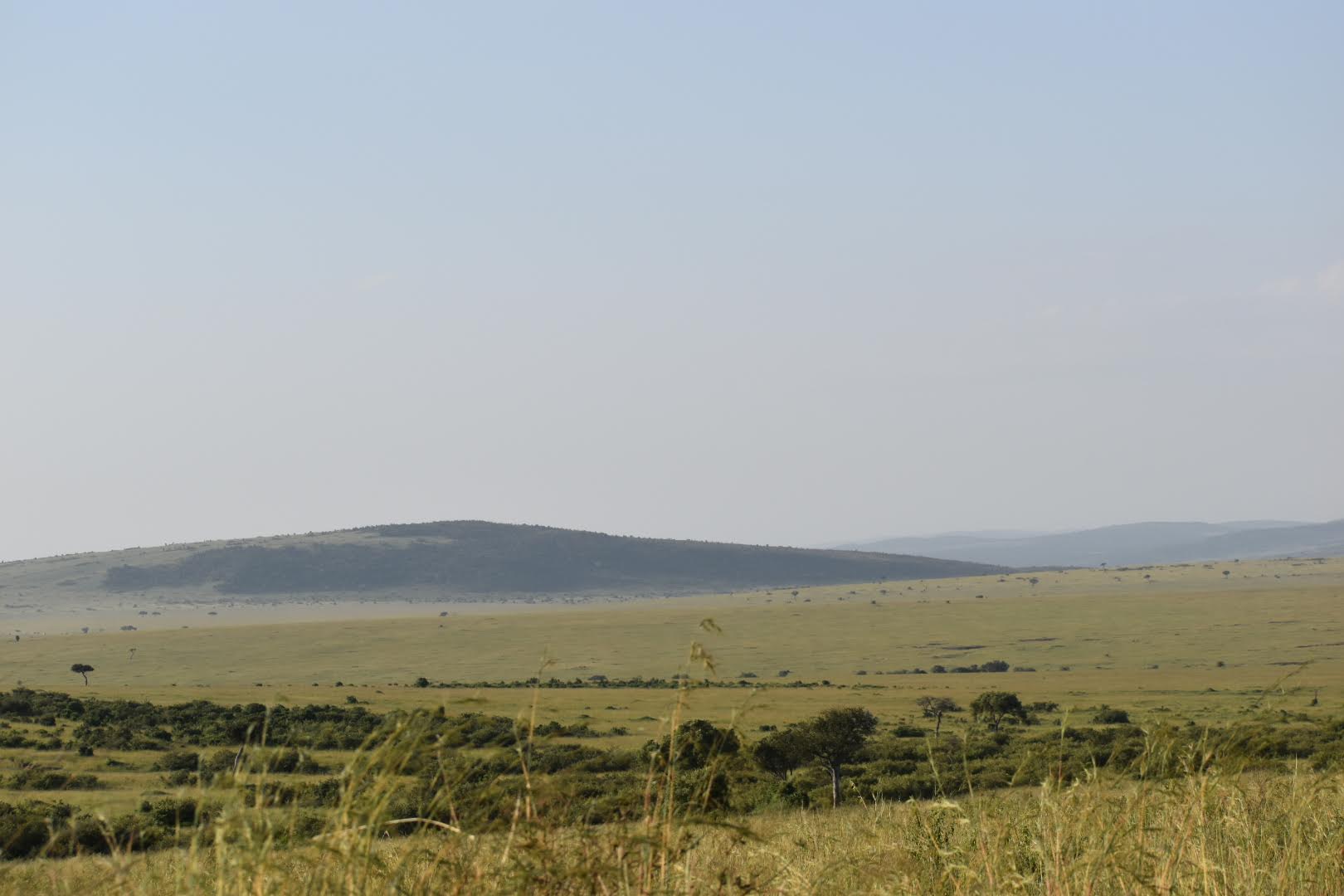


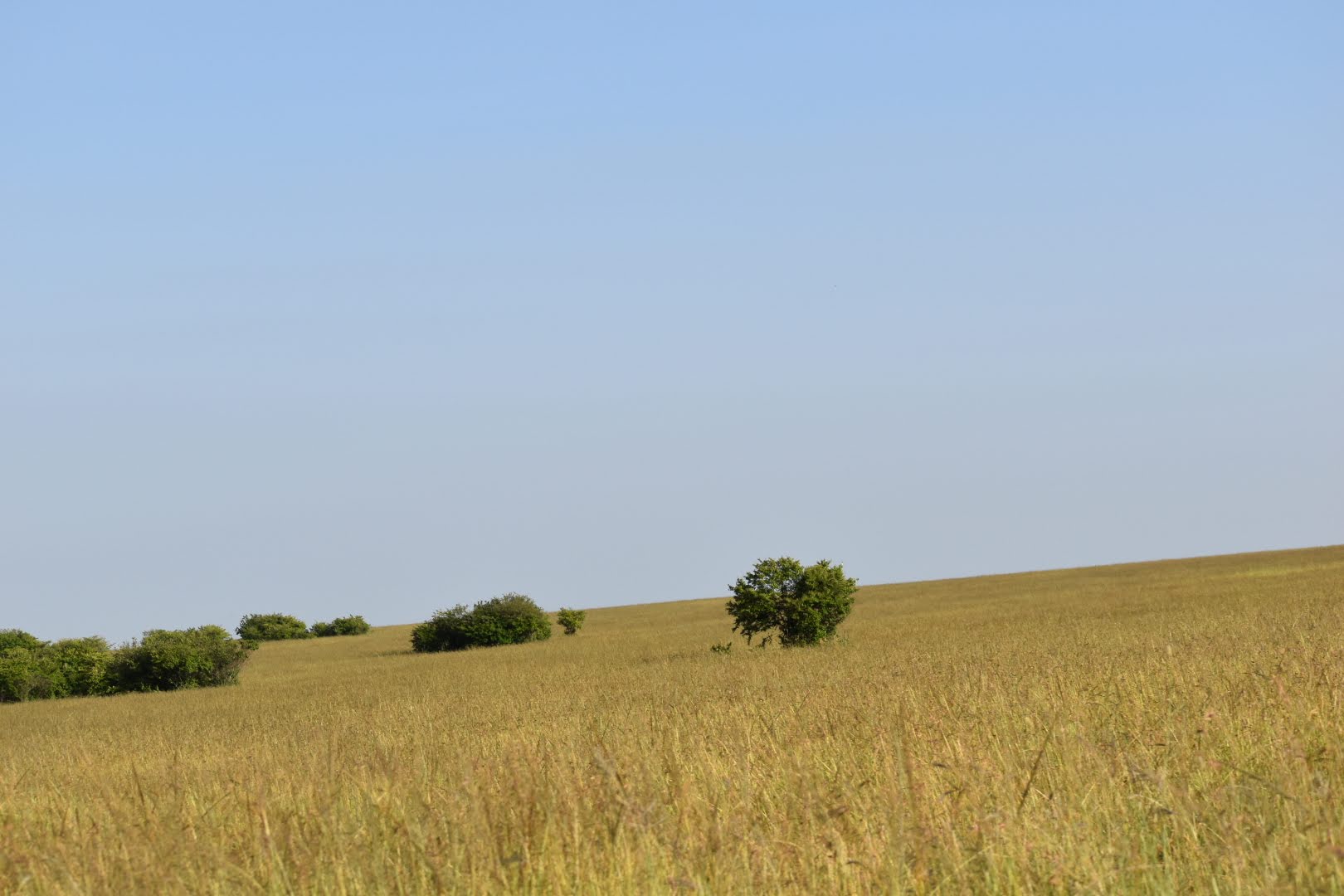
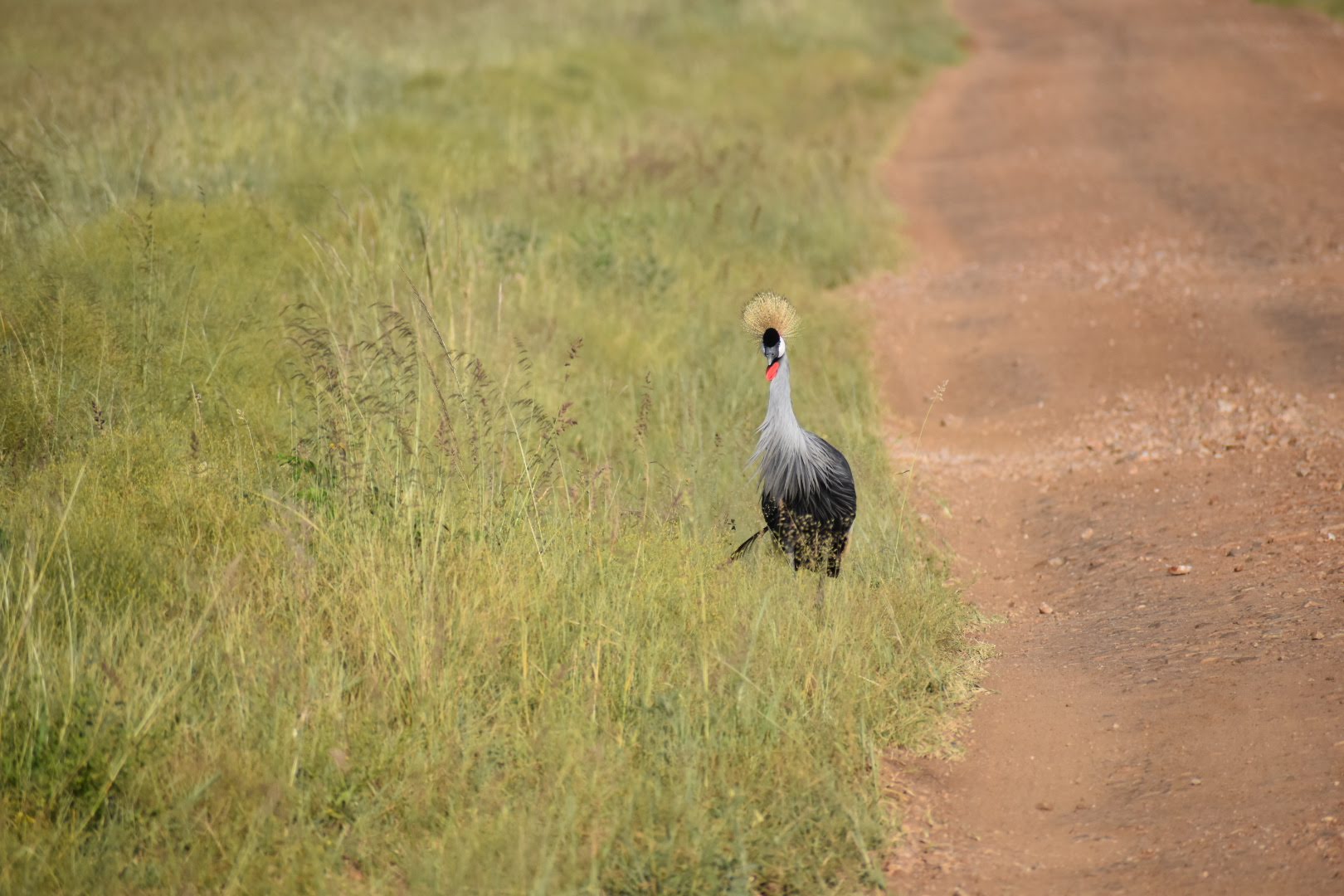

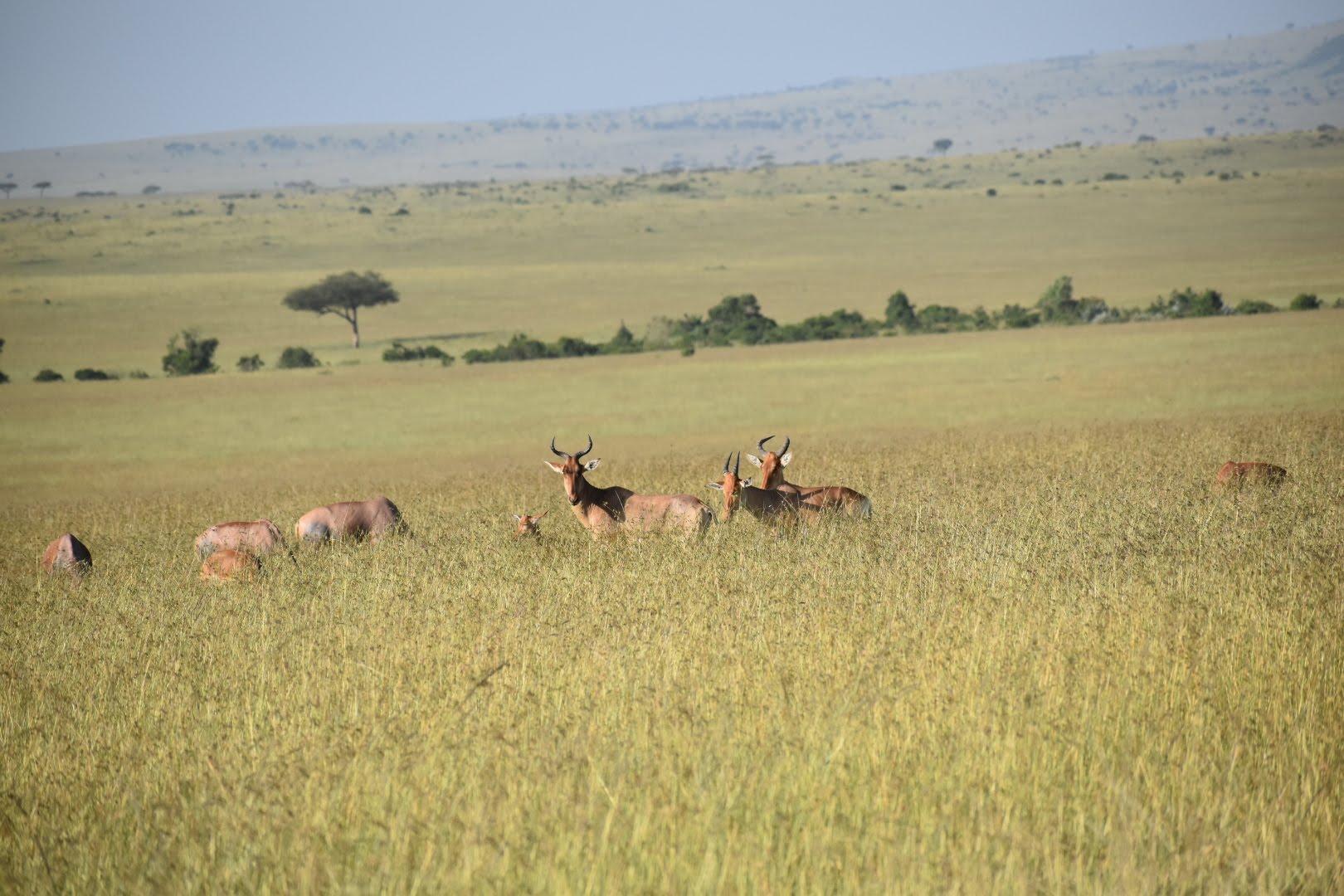
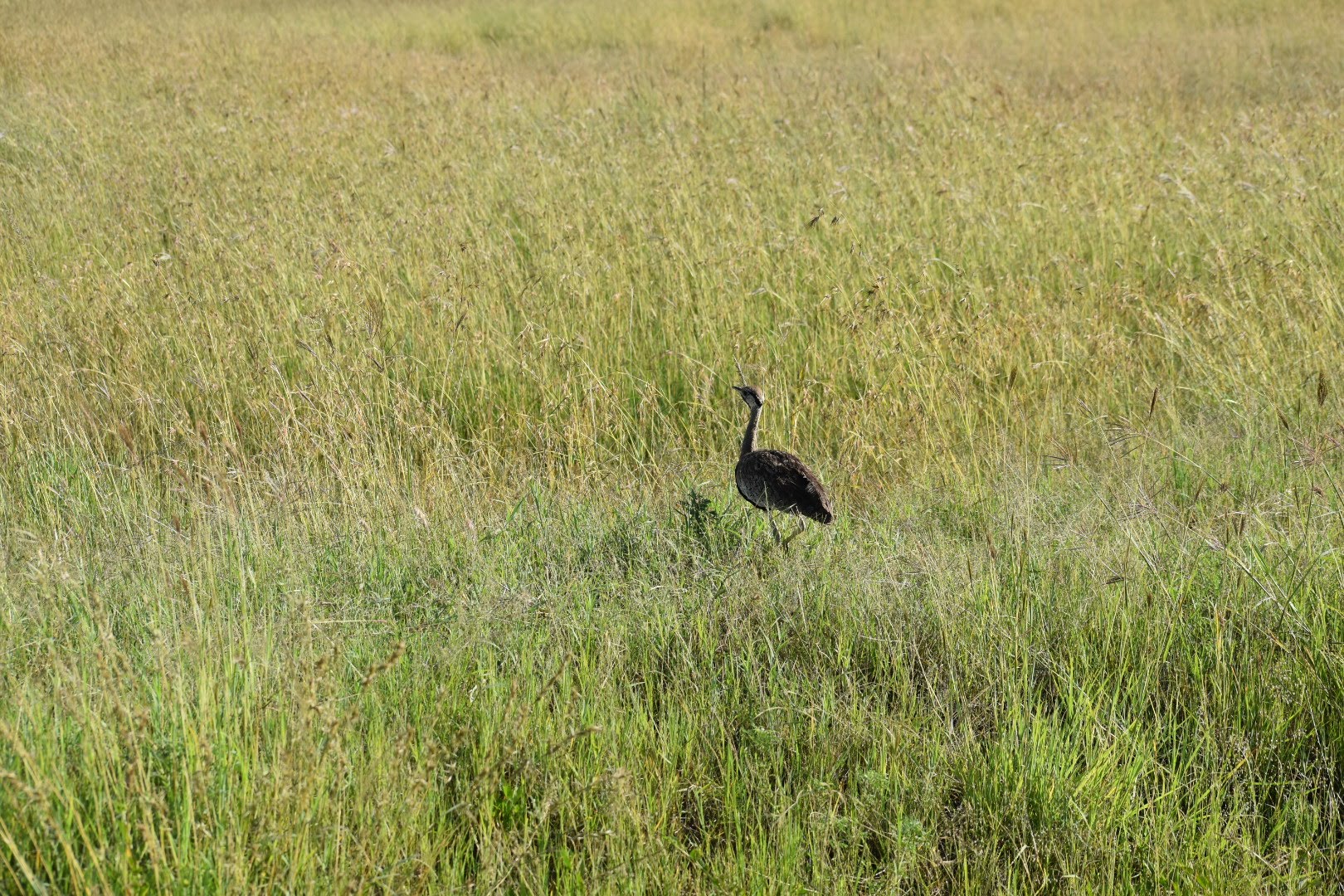
The Toyota suddenly came to a juddering halt as Joel applied the brakes in a hurry. He turned off the engine and said, “Leopard”! We looked around in confusion and then saw that he was pointing down the road. There, about a hundred yards away, was a leopard walking coolly down the track directly towards us. It stopped for a moment to turn back and look at the way it came, then continued towards us. About a hundred feet away, it decided to avoid us and turned to its right (our left) and entered the tall grass, vanishing immediately. It went past us and then stepped back on the track. Joel immediately made a hurried K turn to go back and we followed it for a couple of hundred yards, about 50 feet distant. It never slowed or speeded up, moving in measured fashion until it got to a culvert with trees to our right. It then went into the trees and clambered up a tree about 50 feet off the road.
What a magnificent sighting that was! We had been on Safaris in three other locales in Kenya but had very limited success seeing Leopards, that most elusive of the big cats. I had a 2-second glimpse of one up a hill a few hundred yards away in Samburu – that was it! Finally, we were able to see this prime specimen – Joel and Phillip said it was a female – at close quarters. We thanked our stars for being fortunate enough to see one so clearly.
As we drove away, headed west again, Phillip brought our attention to a tree to our left that had an impala up on branch! He said that the leopard after finishing up the meal probably decided to take a walk down the road to find another tree to rest up for the day! What an amazing 20 minutes!









After driving another 20 or so minutes, we decided to stop for a breakfast. Joel and Phillip turned off the main track to head towards one of the lodges. We drove down that track for about 15 minutes and stopped under a tree. After a quick bush breakfast and some more coffee, we got back on the road again and headed back to the main track.



After breakfast, on what appeared to be to us to be a whim, Joel decided he needed to make a left. As it turned out, it was an inspired decision! After 5 minutes of driving, we spotted a lioness in the grass – the only reason we spotted it is because she was moving. Soon, one lioness became three, then four, as she was joined by three other adult females from her pride. They were to our left, strung out in a line about 20 feet in length walking purposefully at an angle that would intersect the track a few feet behind us. Every now and then, one would come to a stop and sniff the air from a termite mound and then survey the landscape. Clearly, they were on the hunt, looking for suitable prey! After a few minutes of this, all four approached the track and we could see them very clearly. Two crossed the track behind the vehicle, one decided to stop right across from us staring at us at eye-level, and the last one lingered a little behind. The third lioness crossed the track and a minute later, the last lioness in the group stretched, yawned, and then crossed over. They all headed slowly away from us, continuing to look for prey – we had seen none in that direction. Unfortunately, as they were off the track, we really couldn’t follow them – a constraint imposed in National Reserves.
The video I embedded earlier has the lions at 1m34s, or you can see it here.
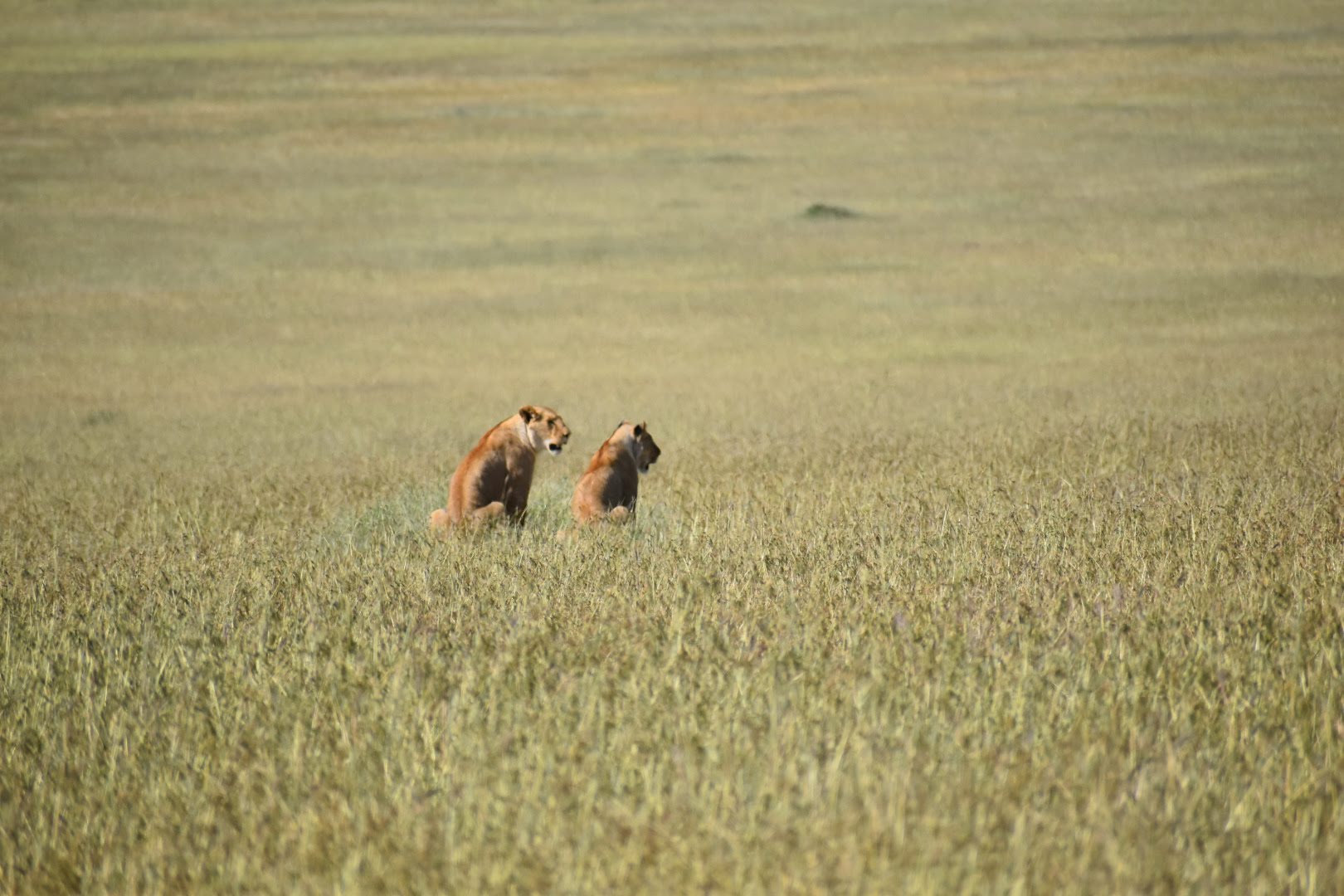
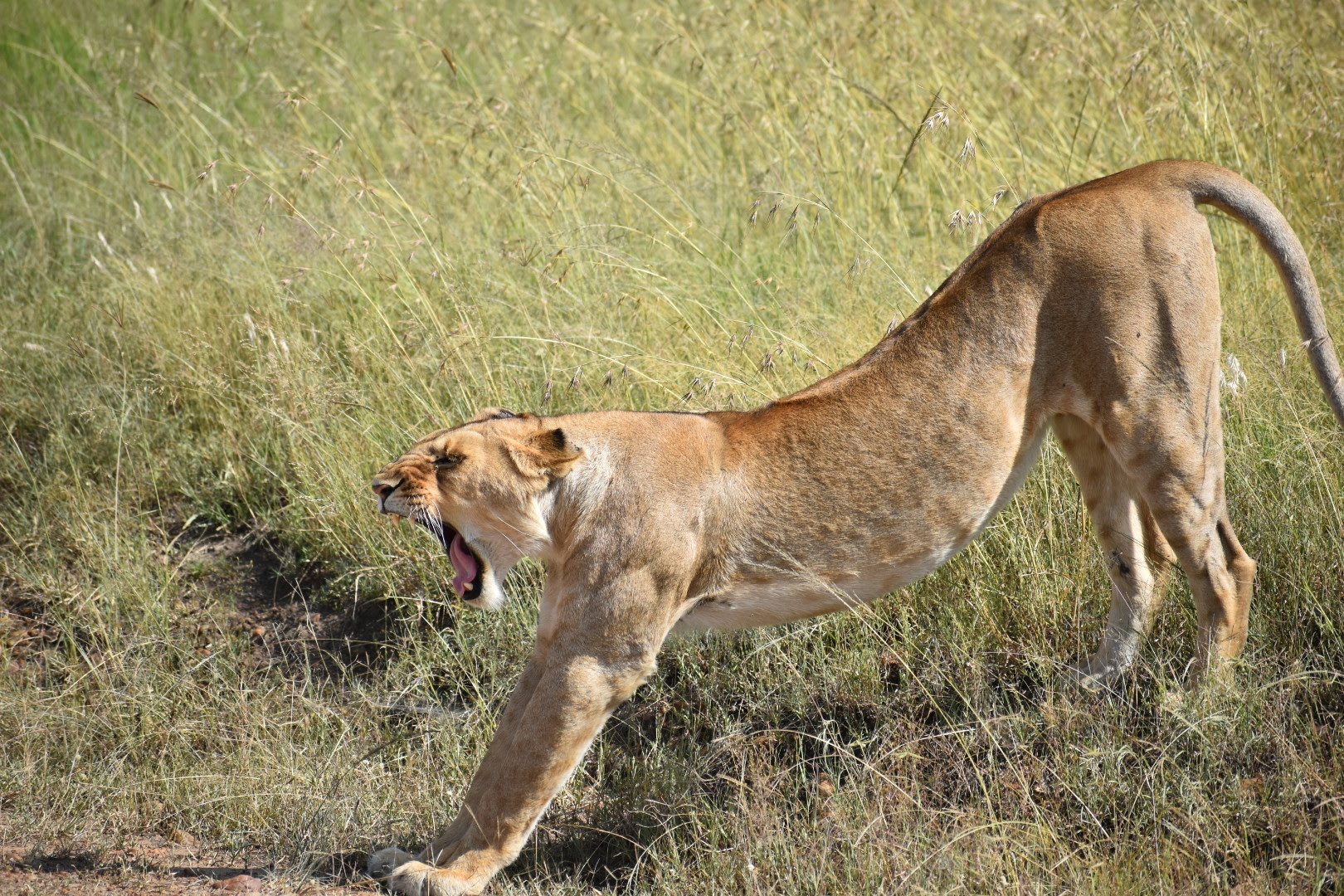
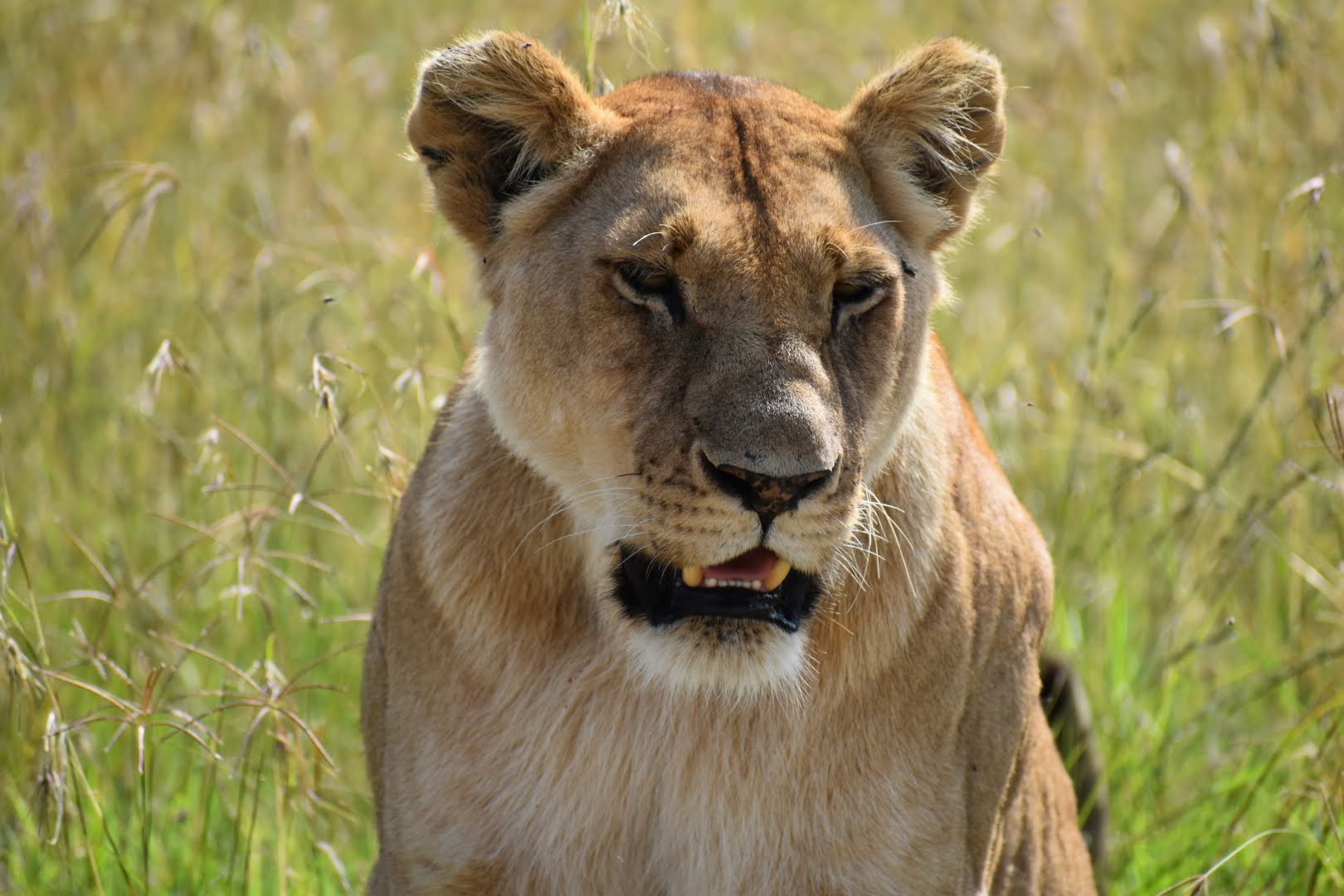
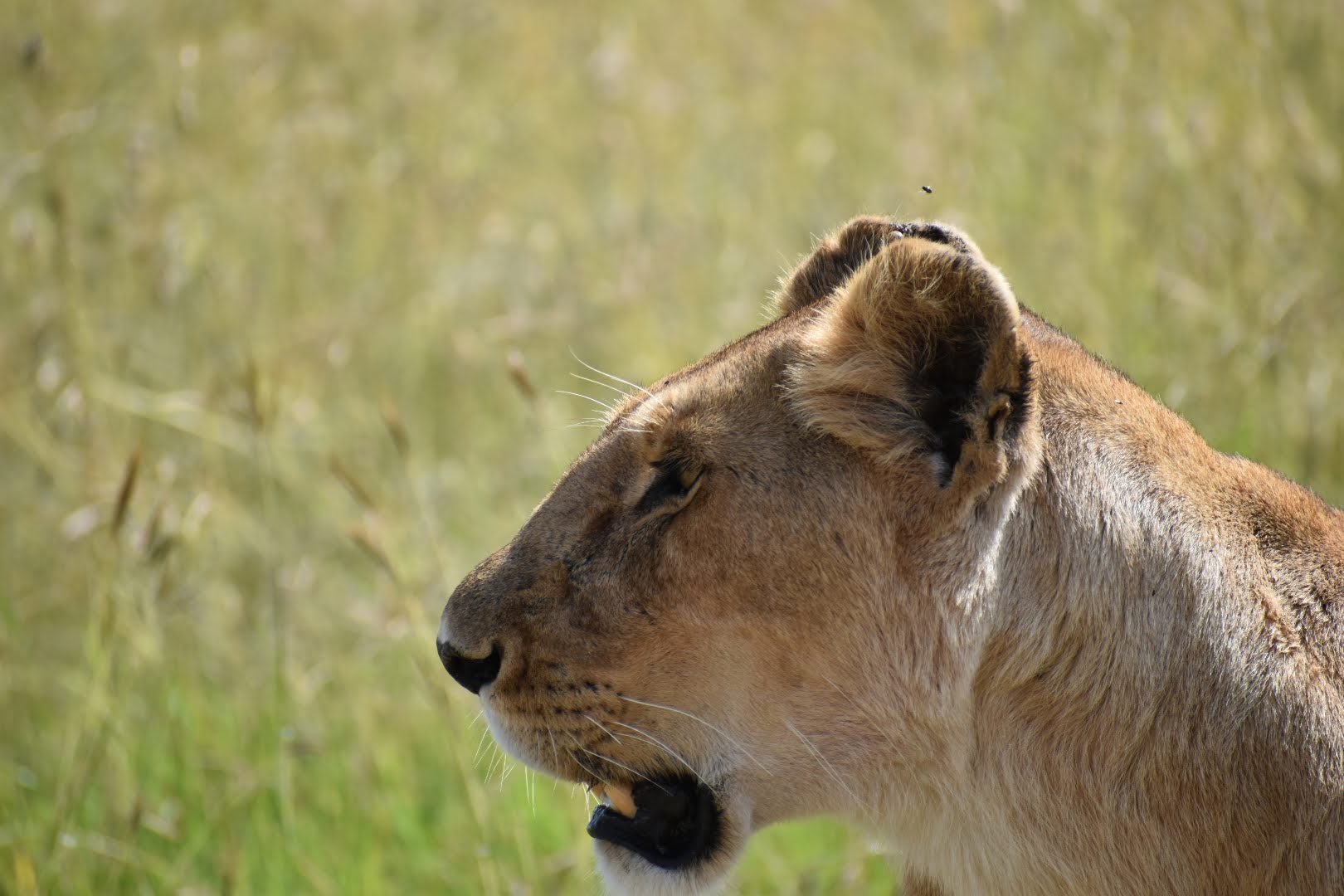
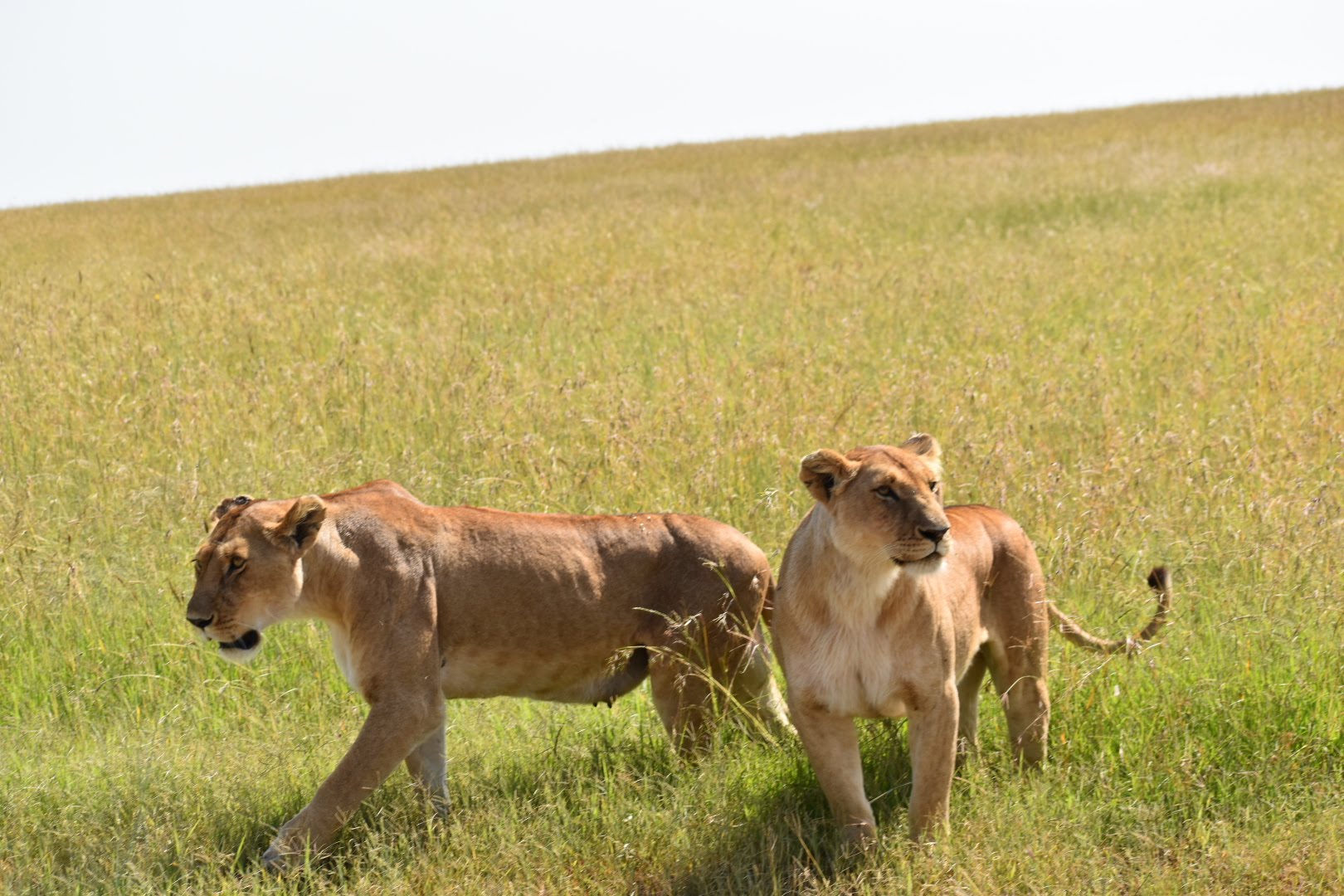
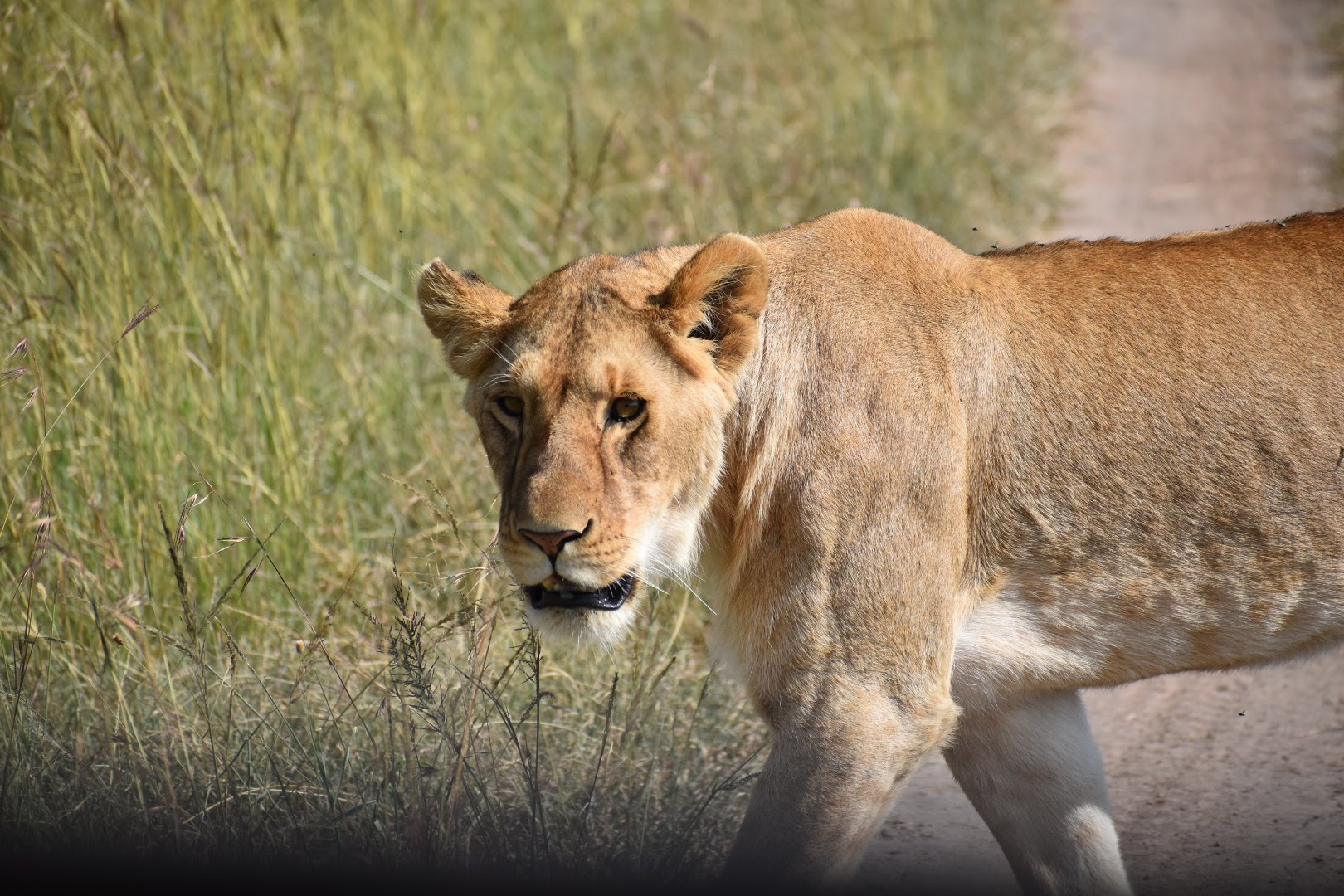
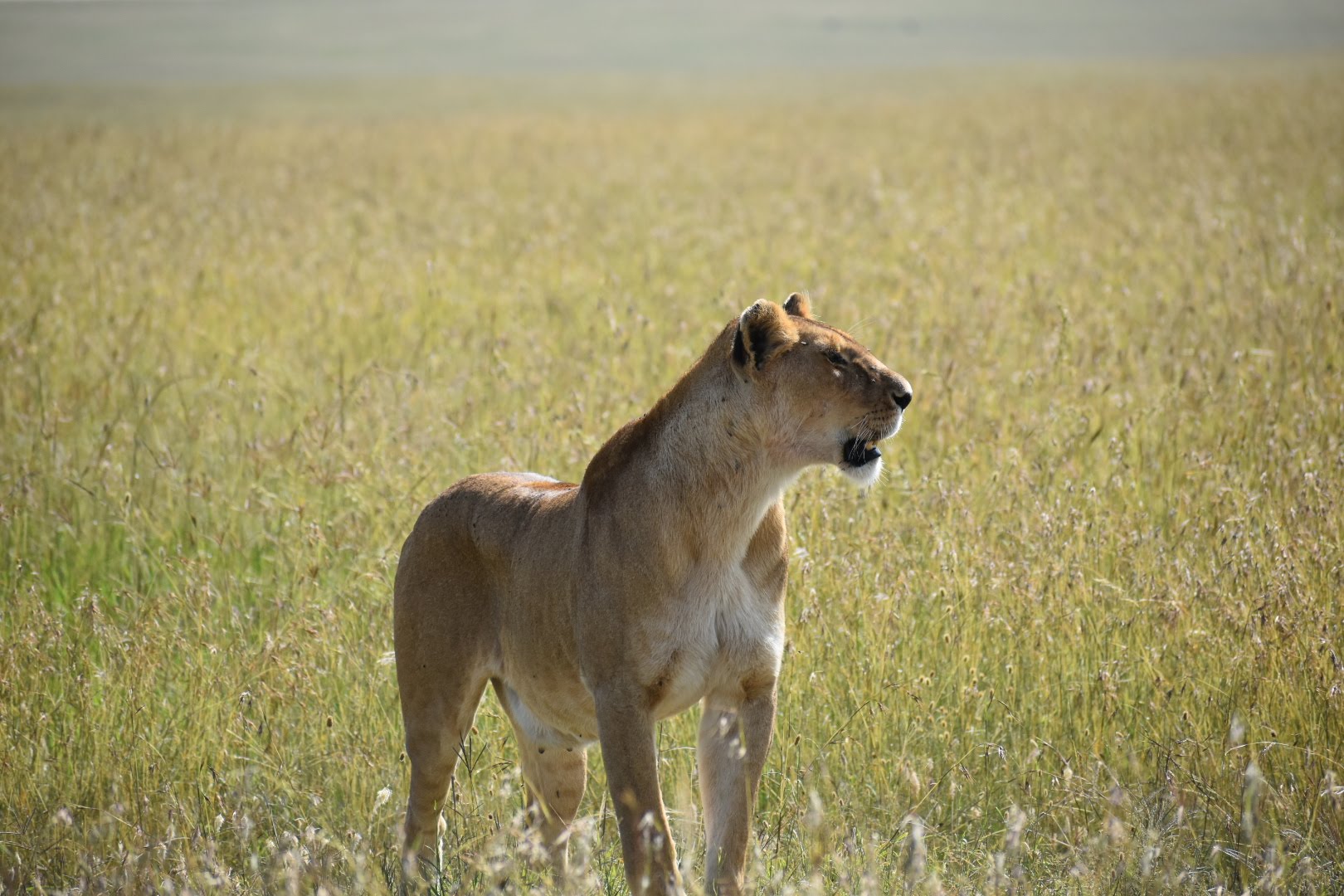

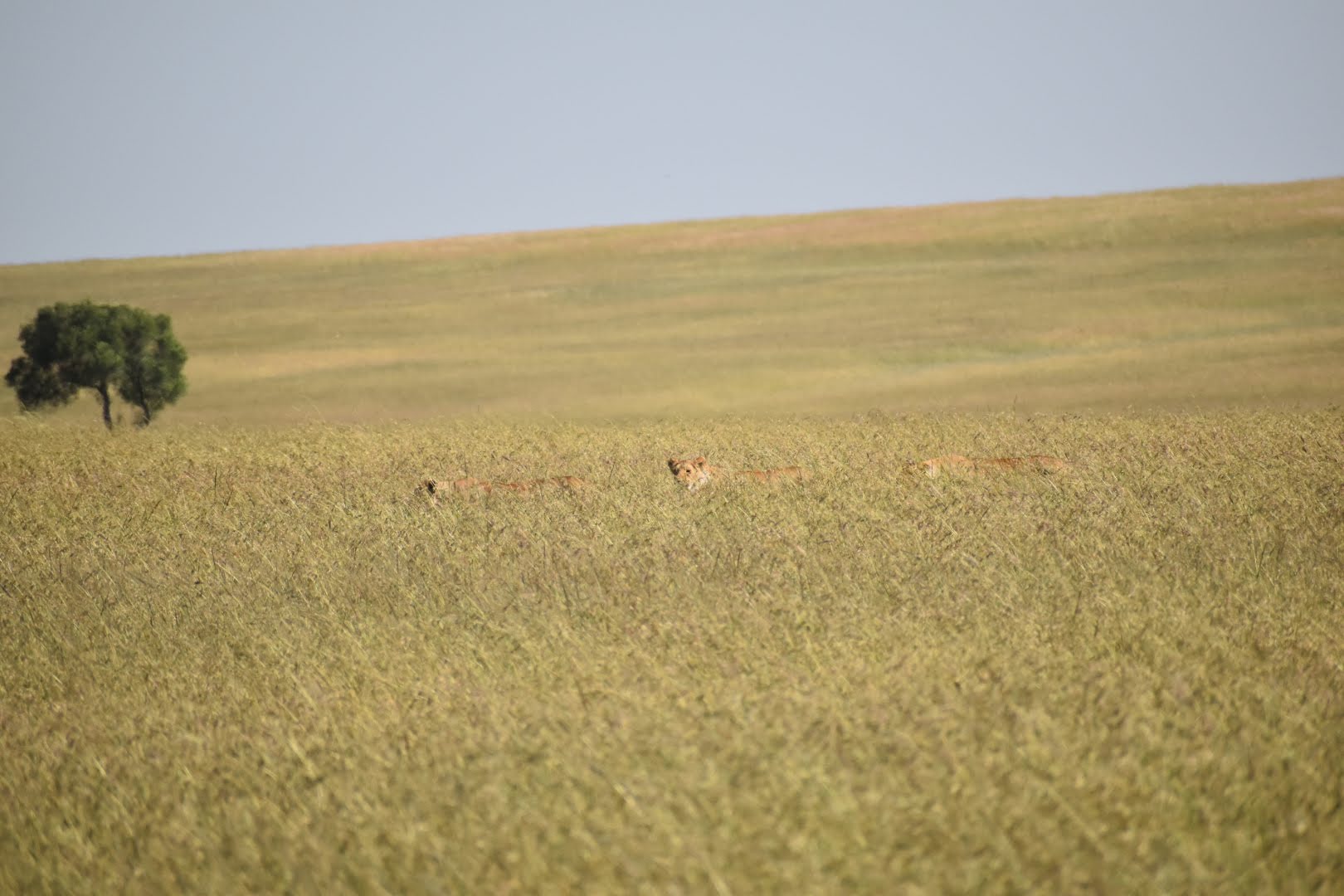
As the lions melted away in the tall grass, Joel turned the Toyota back on and we resumed our ride. We had decided to head to the Mara River which was still a few miles away from where we were in the Reserve. To get there, we first drove about 20 minutes toward a hill with a long slope on either side but a steep upgrade up the side closest to us. On the way to the hill, we saw some interesting birds we hadn’t seen elsewhere. First up was a Northern, White-crowned Shrike. It was perched precariously on a twig on a bush. We then saw a pair of Sooty Chats (the male is on the left and the female on the right in the second photo below). Fifteen minutes later, we saw a few Hartebeest in the tall grass. I later found this was a sub-species called Coke’s Hartebeest found on the Savanna of Tanzania and Kenya. Soon, we were at the base of the hill. Joel gunned the engine and we shot up a bumpy, winding track, travelling too fast for comfort! We held on for dear life and about 20 minutes later while we were approaching the hilltop, we spotted a pair of Topi atop a Termite mound. I am not sure if they were asleep or just standing on it. They were facing in opposite directions, again probably to give predators the impression that they were alert and not worth the trouble!


A minute later, we were atop the hill. Joel came to a stop on a flat but rocky portion of the hilltop. We dismounted and walked a few yards to one of the most breathtaking, panoramic views that we had yet had of the Savanna. Look at the photos below – I don’t think I can put it in words that do the place justice, but I have captioned these, so you have a better sense of what you are seeing. Joel and Phillip told us that during the Wildebeest migration in July-August, the entire plain below us would be completely covered with Wildebeest. Over 2 million of these animals make the Serengeti-Masai Mara trek every year. It must be an amazing sight; one I hope to see one day.
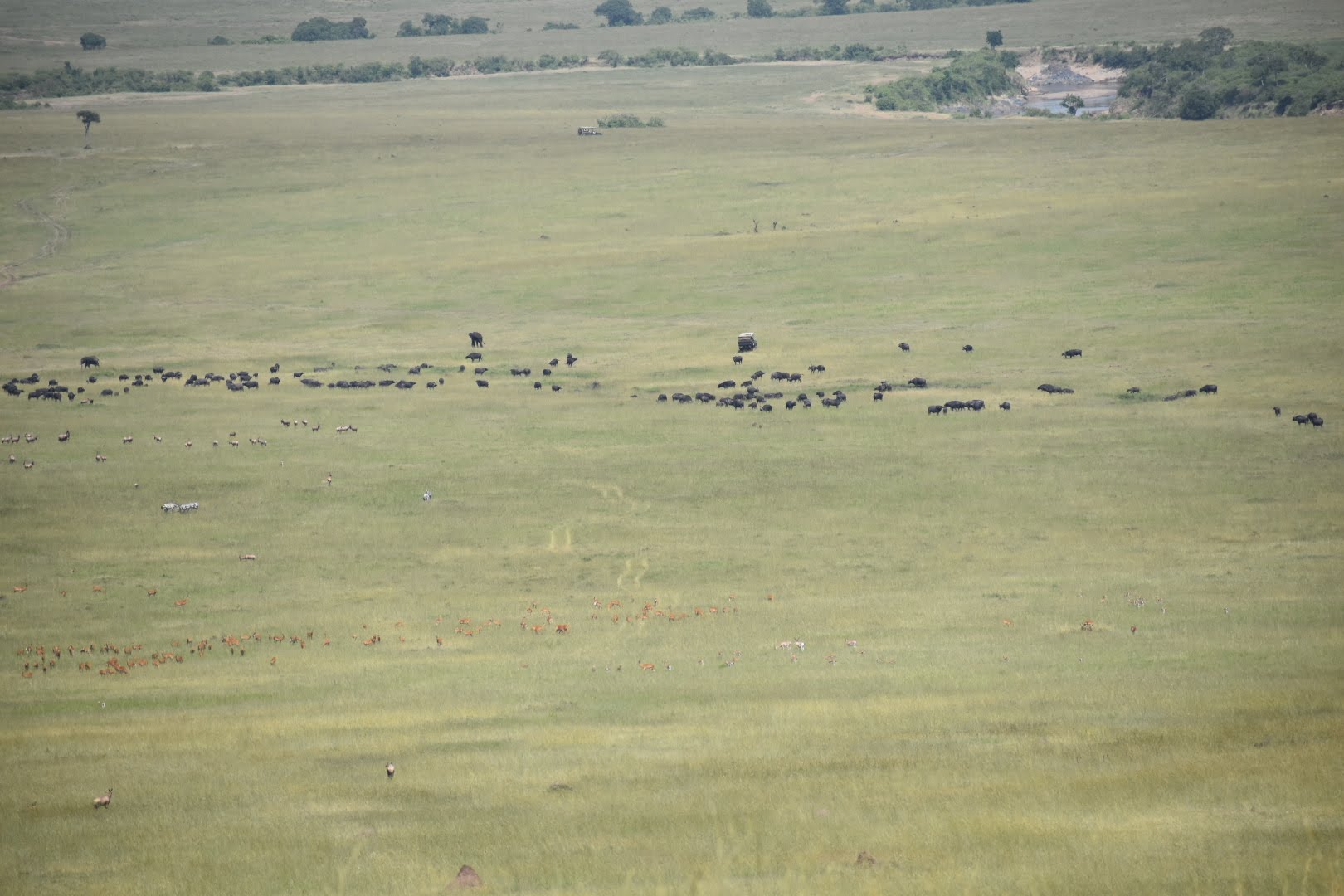

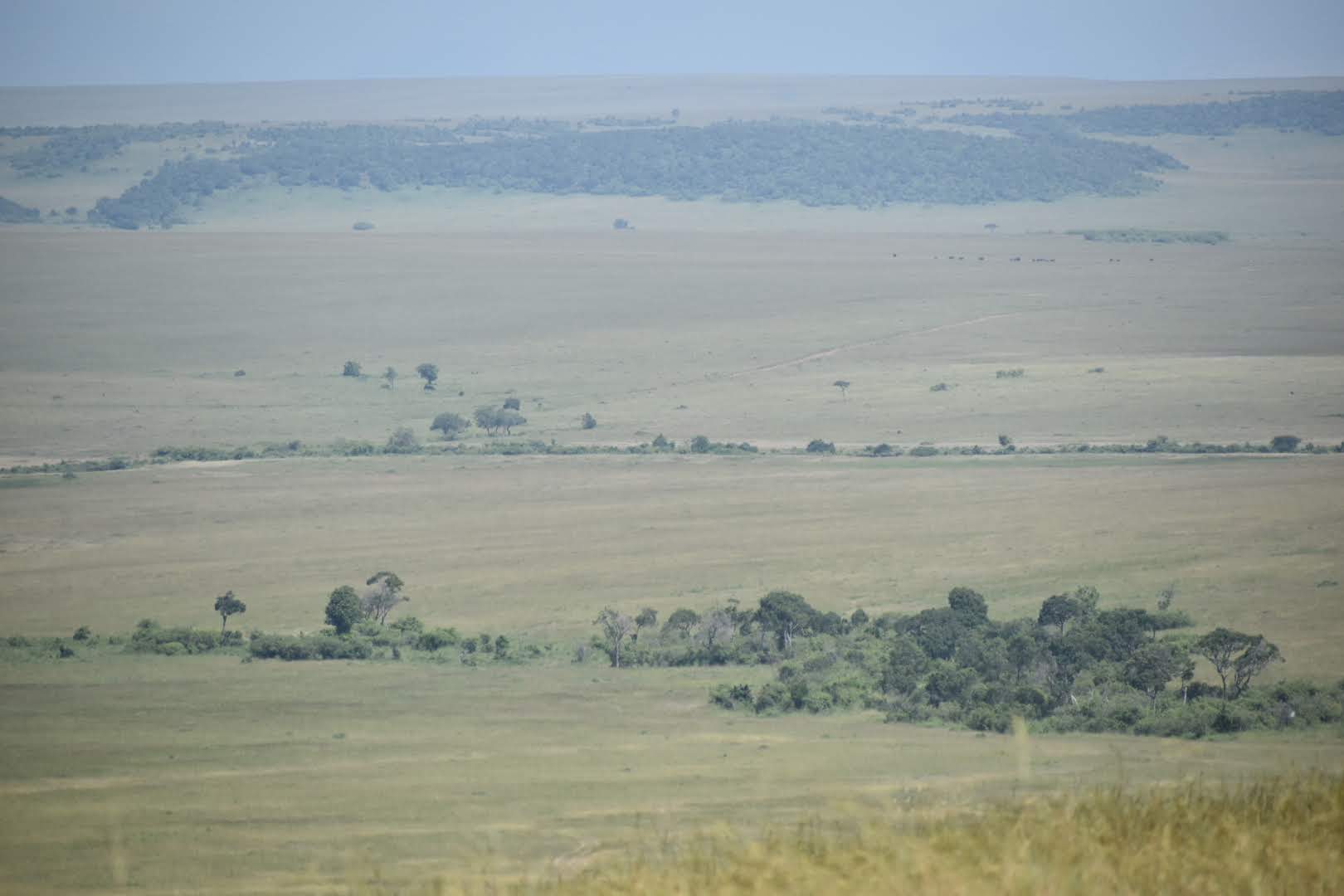
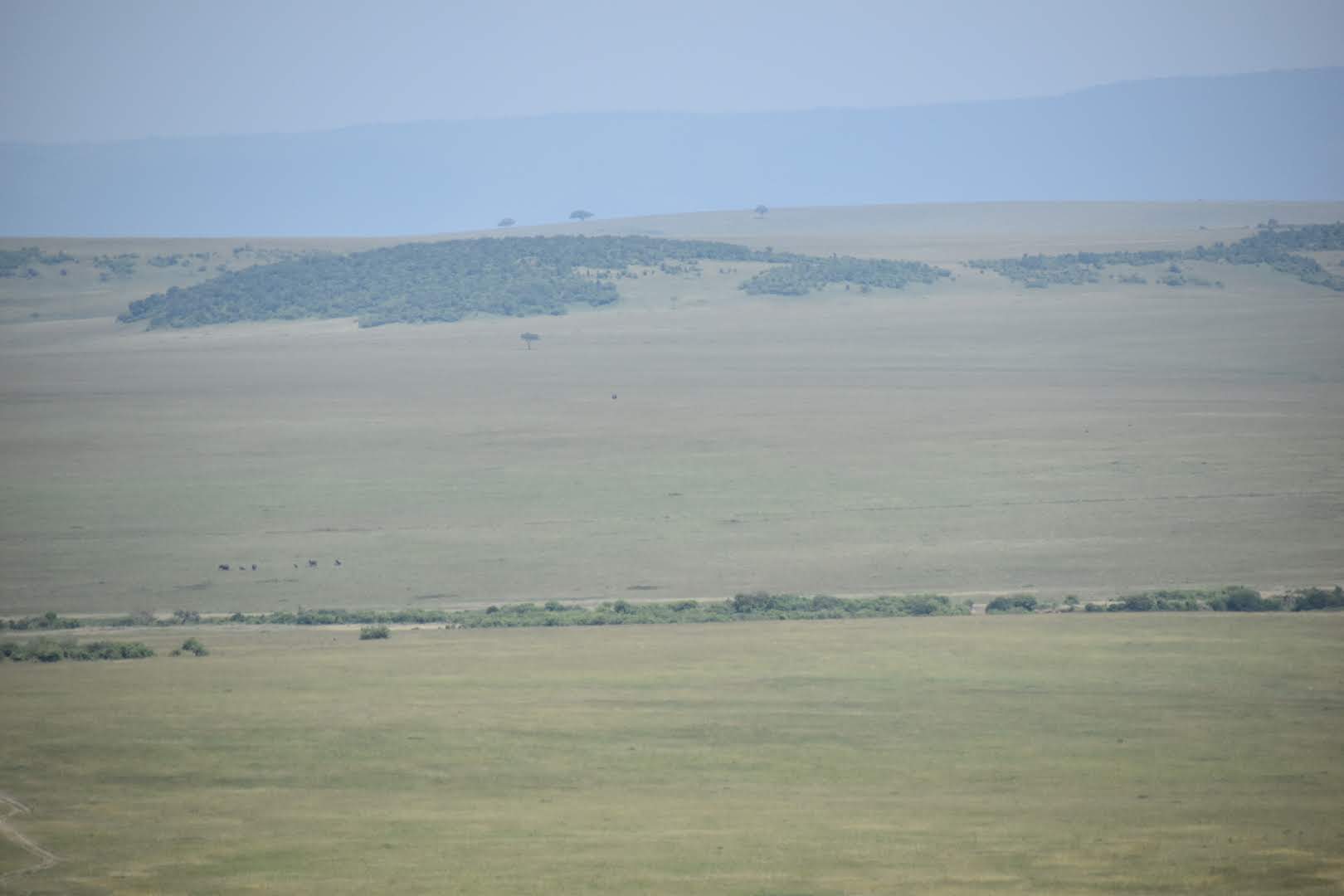



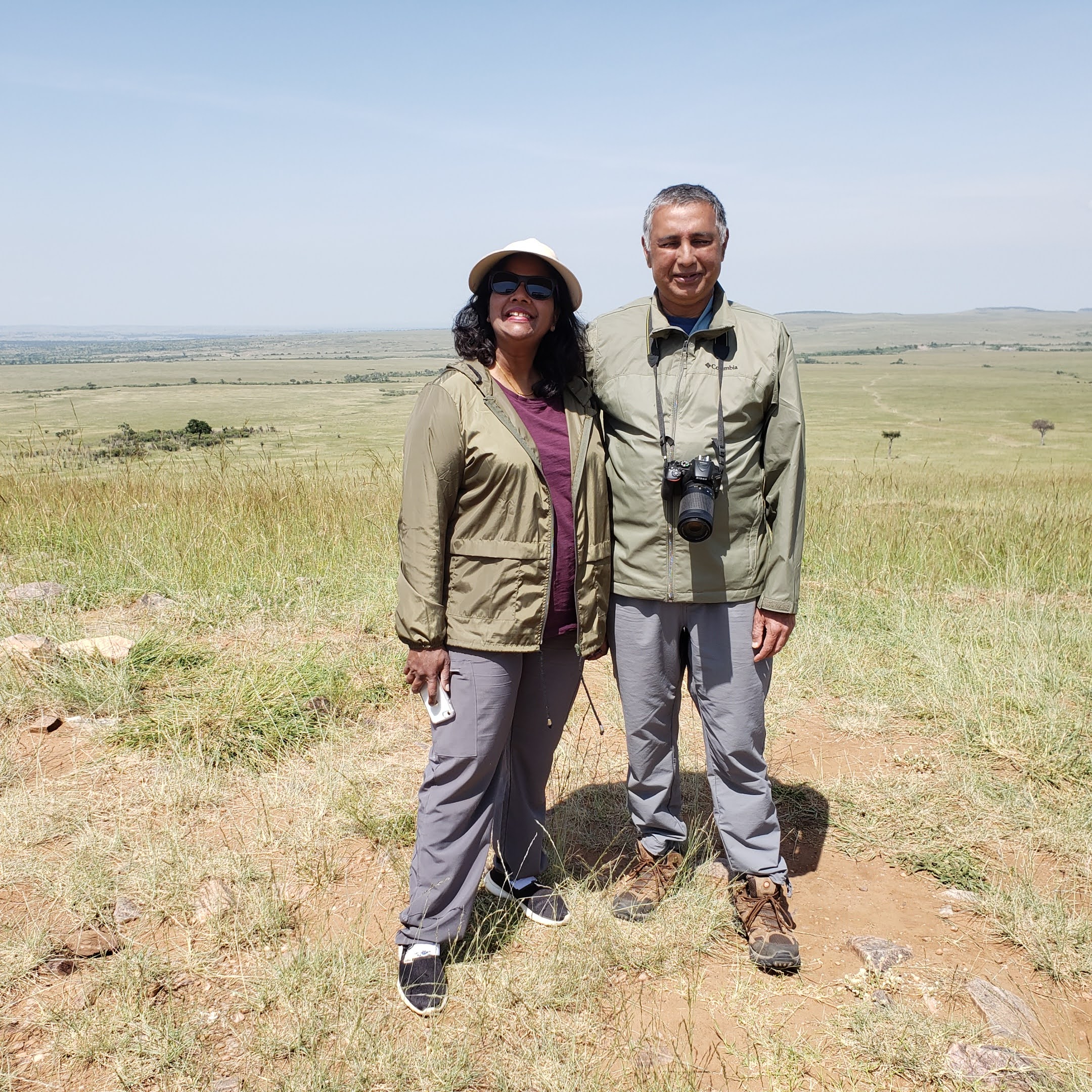
By now, it was 10:50am. We got back in the Toyota and Joel headed down the hill on the other side. It wasn’t as steep but still quite bone-jarring. I remembered David a few days ago telling us to watch out for the Masai Mara massage! It all made sense now!!
After a ride of about 10 minutes, we were right where the picture above was taken of a vehicle with a few elephants around it. And the elephants were still there, methodically browsing on the grass. (Did you know that an adult African Elephant consumes about 300 pounds of food per day?) We watched them for a while and clicked some photos.



After a few minutes we set off again toward the river. We paralleled it for a while and finally found a place to pull over. That was our first close-up sight of the Mara, this region’s lifeline. We saw some hippos in the water, something that I found unusual – I had thought that hippos preferred still water. Unfortunately, our guides told us that we couldn’t go down to the level of the water since it was dangerous (hippos have been known to charge and kill humans). We settled for viewing the river from roughly 40 feet up on the bank. It was easy to imagine the Wildebeest and Zebra crossing the waters during the migration – narrow pathways led up to the bank and the grasslands beyond and bones littered the banks at water level.




We asked Joel and Phillip where the crocodiles were. They said that the crocodiles, that grew up to about 16 feet and weigh 1650 pounds, were probably further downstream in areas of the river that were quite inaccessible at this time of the year, the banks being overgrown with vegetation. The crocodiles ventured to the Wildebeest and Zebra crossing points, such as the one at which we were, only during migration season. We did however spot a lone crocodile on the far bank, not too far from three hippos swimming lazily (more likely walking on the riverbed) in the murky waters.
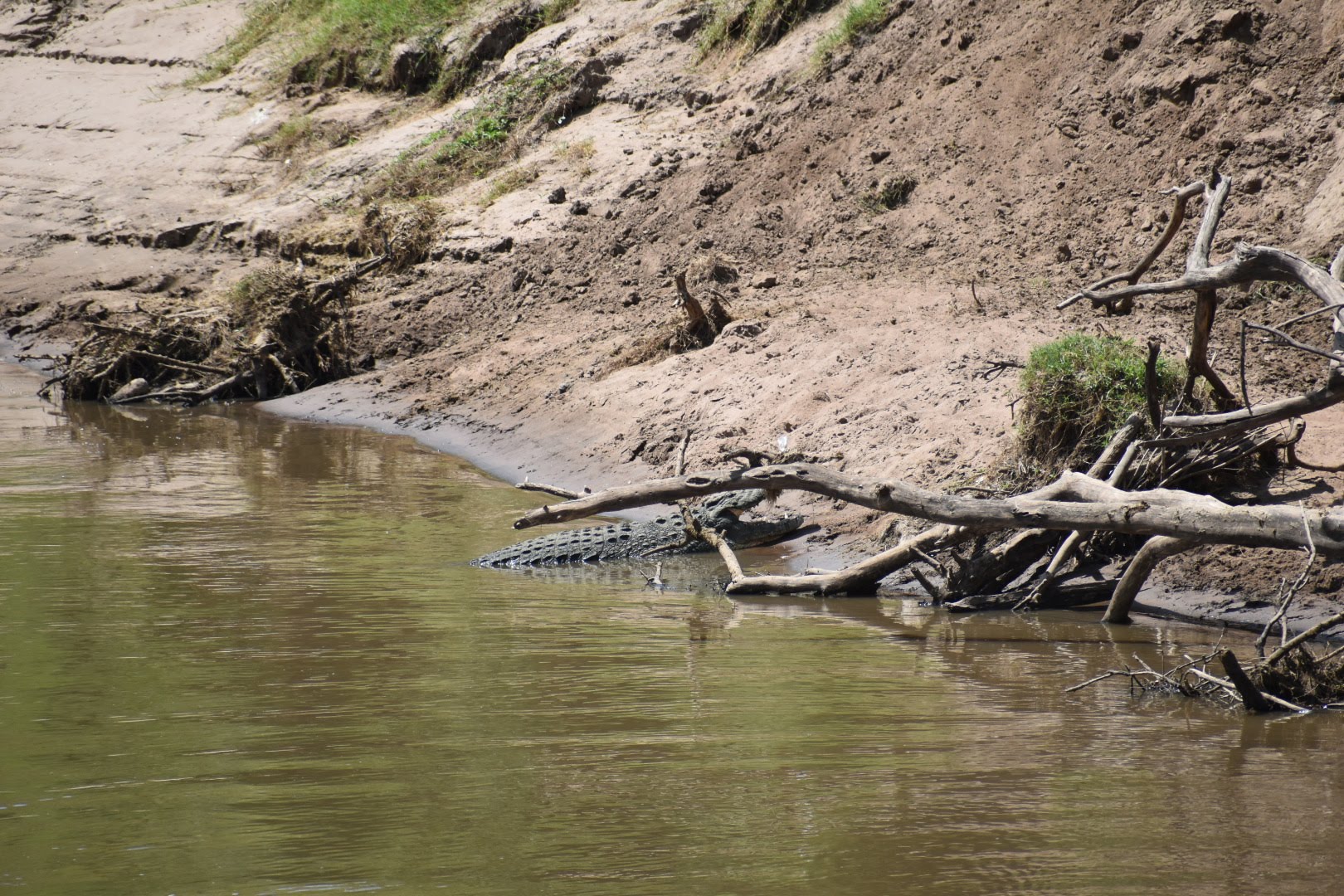
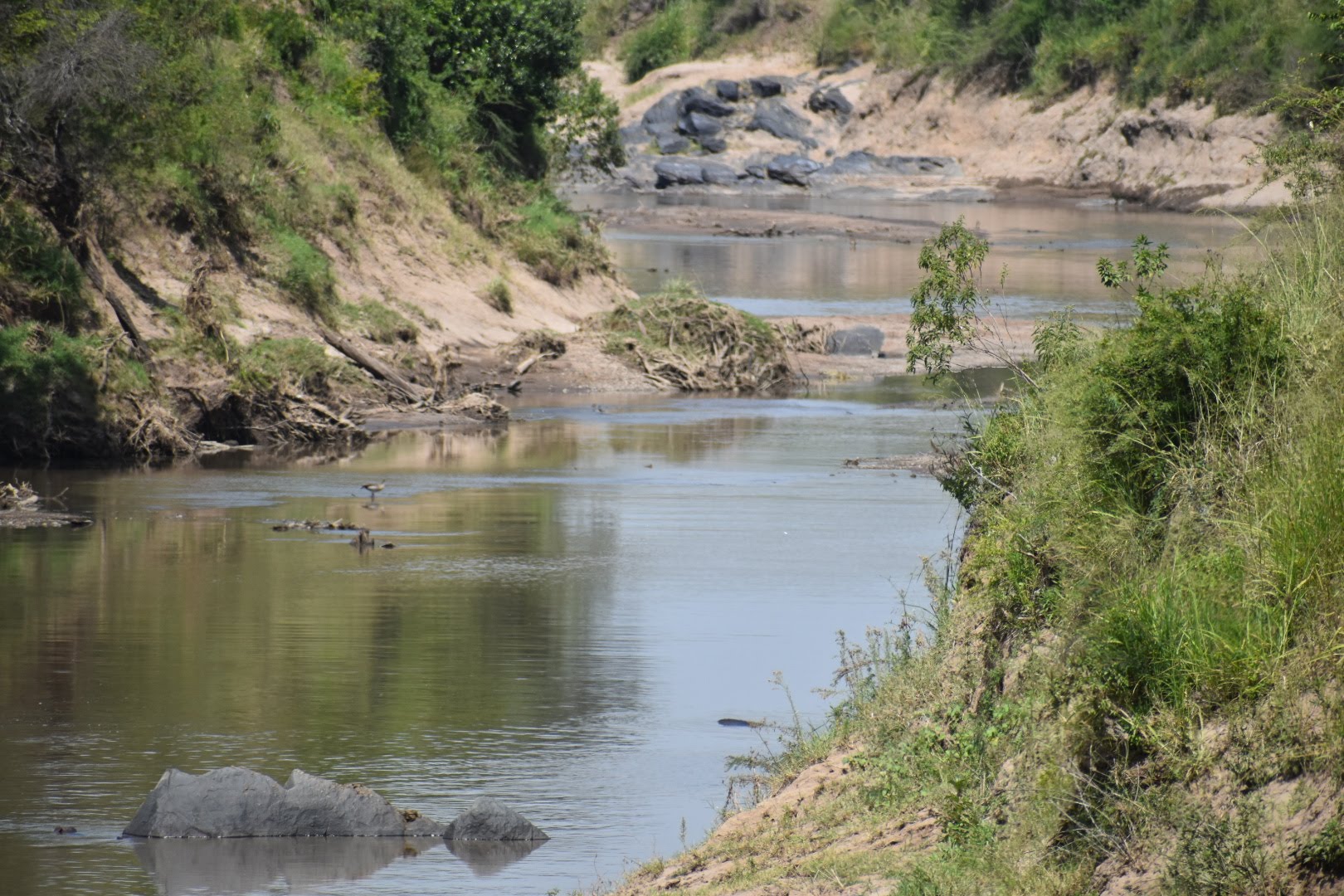

After a few minutes, we drove off along the upper riverbank. I then realized we hadn’t taken the sample of sand for Tara, my daughter (she collects sands from around the world and I had strict instructions on clicking a photo, getting GPS coordinates and to note down the time and date!). We stopped at another Wildebeest crossing point and Phillip hopped off to get the sample for me. In the photo below, you can see how narrow the access is to the river, 30-40 feet below.
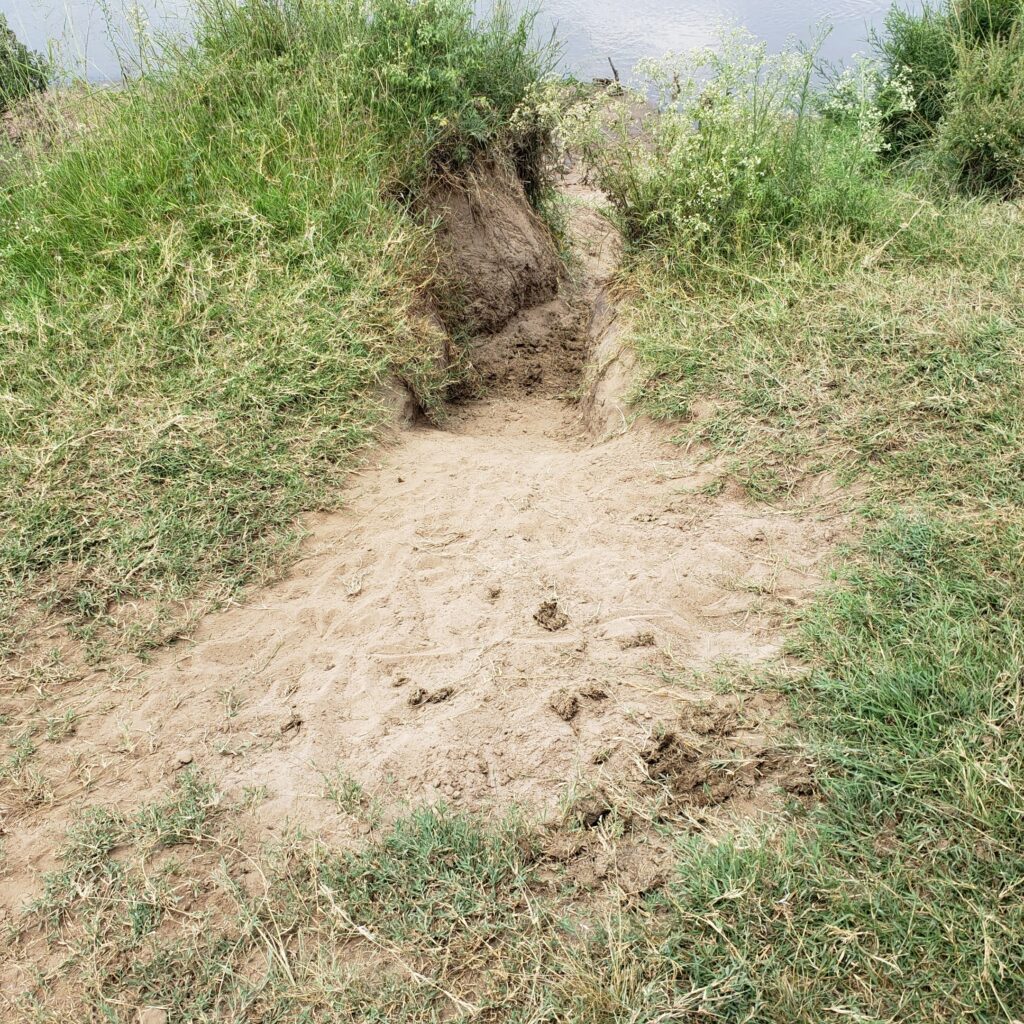
Having fulfilled my fatherly duties (!) we set off again, driving away from the river and towards the same hill from atop which we had viewed the Mara River and herds of animals. We saw a Topi nearby on our way back to the hill.
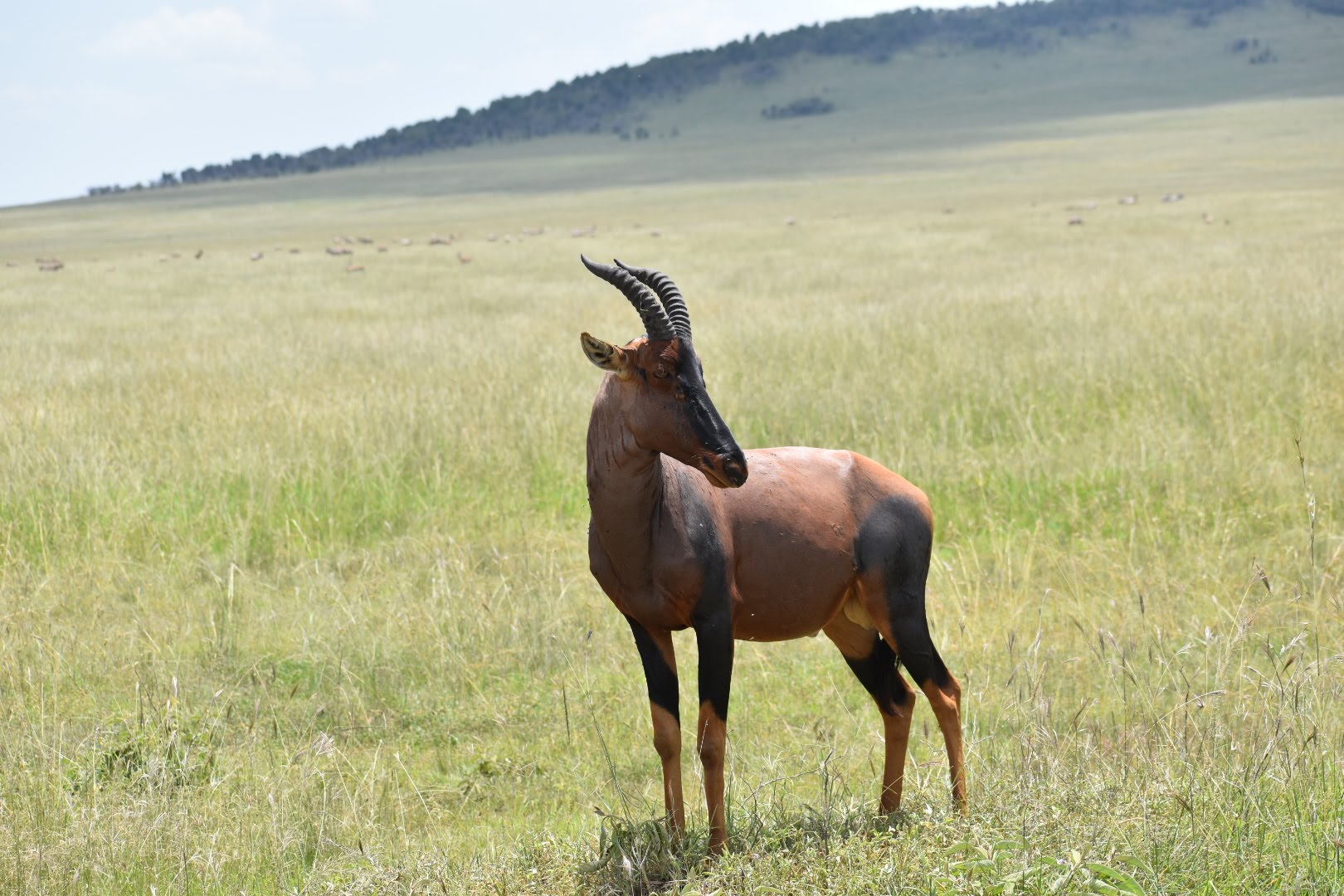

Soon, we were on the bumpy track headed up the hill, crested the hill, and went down a different track on the other side. Joel took a more northerly routing, and we made our way through the scenic grass plains seeing the occasional antelope – Impala or Topi mainly. After about a half hour, we decided to stop for lunch, this time at a lone tree. Phillip first checked around it for reptiles while pointing out a bush 200 yards distant where he said that he had found a Boomslang on one of the previous times they had stopped for lunch in the area. I marveled at how he was able to recognize a spot by the shape of a tree, the hills around, or something else that distinguished it. Truly amazing!
After a leisurely lunch we set off again about 2pm. When we had been driving about 10 minutes, Joel spotted some movement in a bush and stopped to investigate. This turned out to be a pair of Cheetahs relaxing in the shade. We watched them for a few minutes but they neither showed any interest in us, nor in getting up.
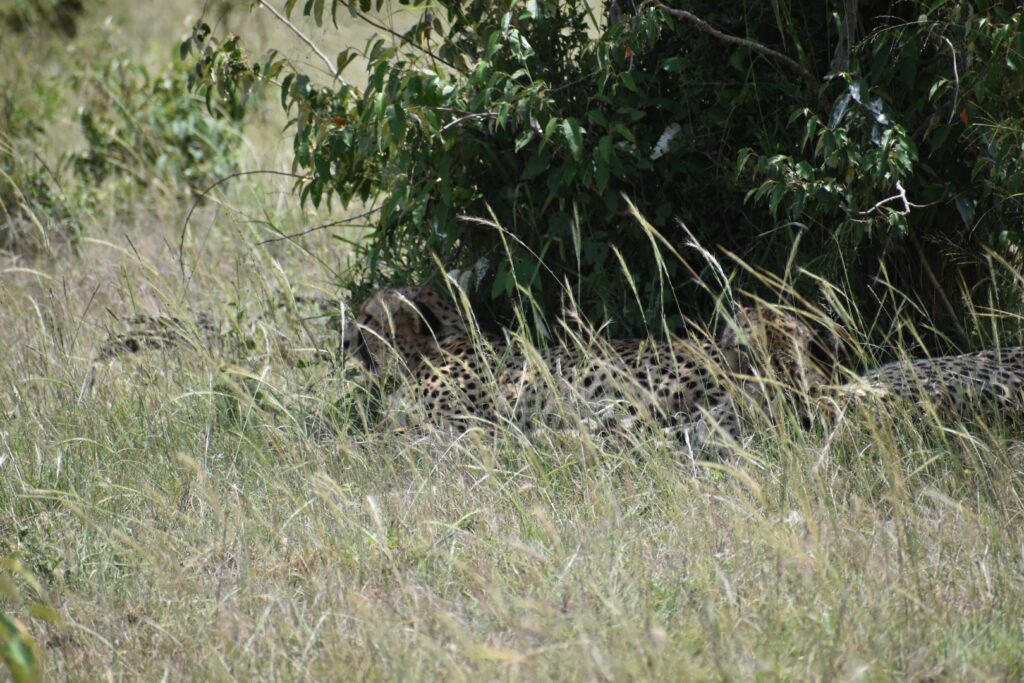
After a few minutes we drove on and were back at the Sekenani Gate to the Reserve. There, Iris tried to find one of the Masai women selling trinkets that she had met in the morning and had promised to make some purchases. Unfortunately, she was away. We ended up buying a few things from the other Masai women.
With that, we got back on the highway headed towards Ol Kinyei – we had changed our minds and skipped the alternate route through Naboisho Conservancy. In about a half hour, we were back at the Conservancy entrance and then on Conservancy land, bumping our way back to Camp. On the way we spotted a White Bellied Bustard, then a Banded Mongoose family and finally, as we were close to Camp, our favorite family of Waterbuck.

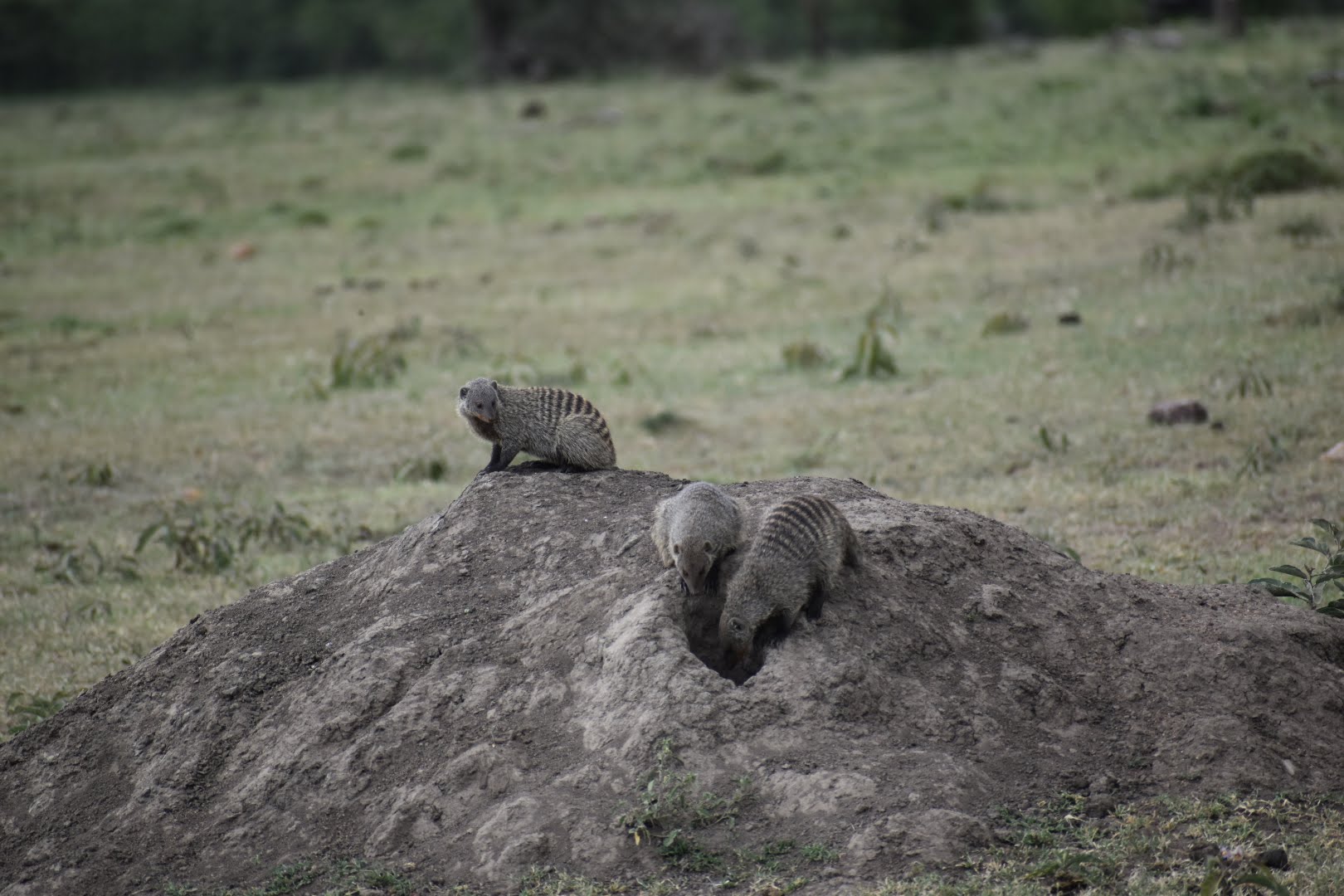

Back at Porini Cheetah Camp (Sunday, March 13)
We pulled up to the Camp entrance at 3.45pm or thereabouts after a long day and headed straight to our tent to wash up. After relaxing a bit, we decided to get some photos of Camp. You have seen those of our tent here but not of the larger camp. Here are a few selected, captioned photos.
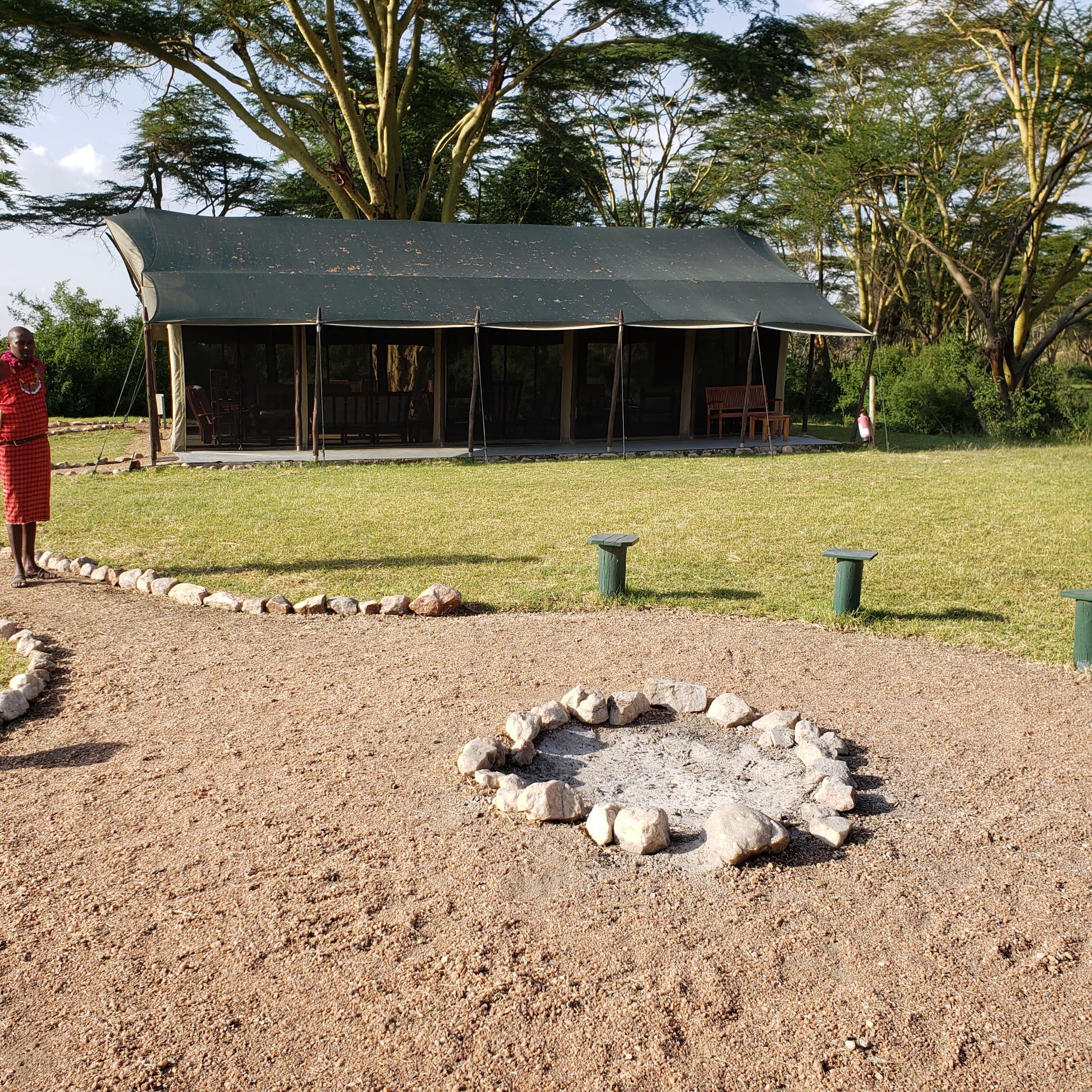
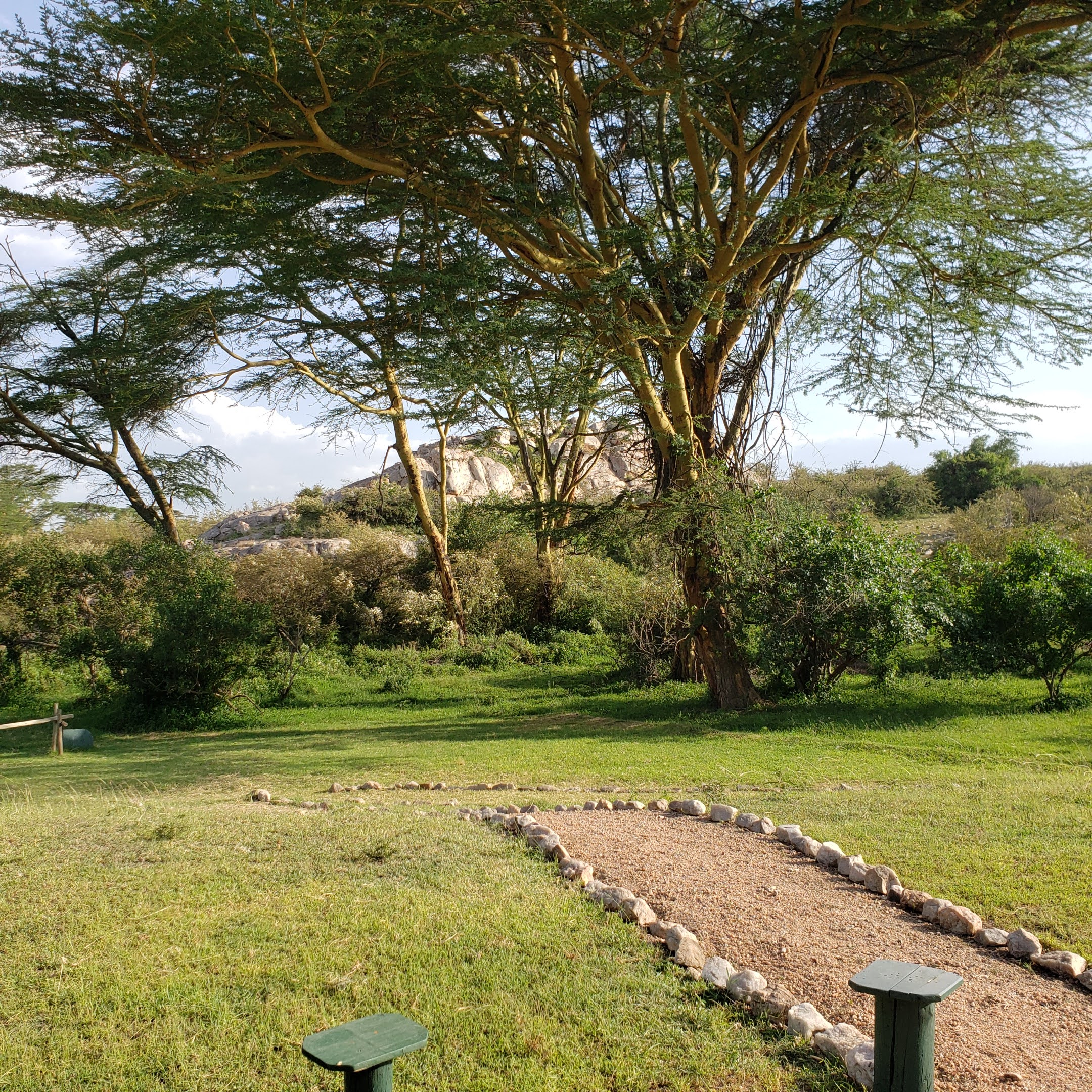
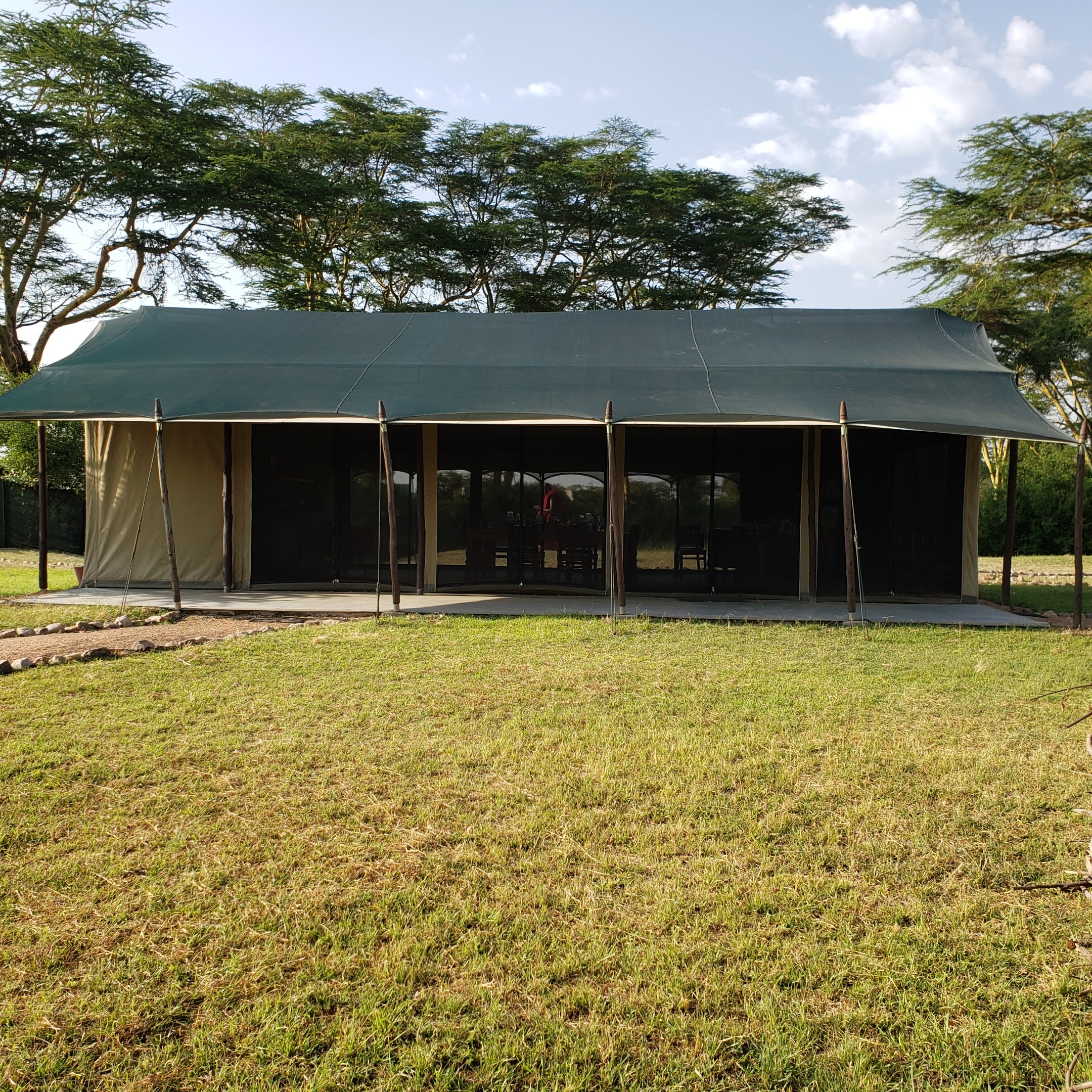
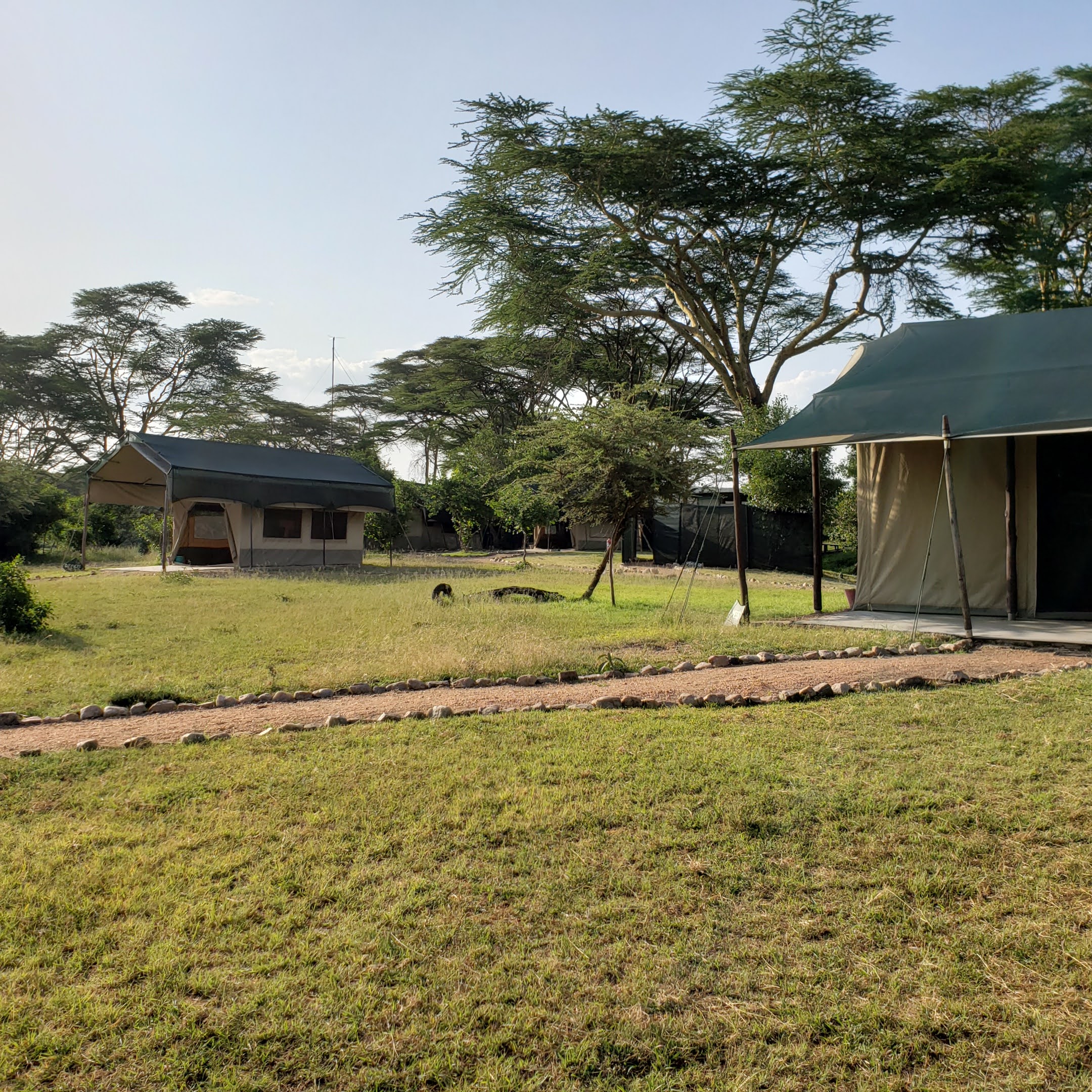






At 8pm we headed off to the Dining Tent for dinner. After another delicious meal, and a few minutes at the fire pit, we repaired to bed. Our last day at Safari was coming up and we wanted to be fresh and well rested.
Random Tidbits and Musings
- Morning temperatures can drop to the upper 50s but the wind in an open vehicle can make it feel much colder. Dressing in layers is best.
- Balloon Safaris are expensive (~500 USD per person) and are probably best avoided except during migration season (July-August) as you won’t see much at other times. I plan to save my hard-earned cash for hot air ballooning in Cappadocia, Turkey, another place on my lengthy bucket list!
- Tip for fellow Bloggers and Photographers: Caption photos as you go, as it gets hard to remember later what you are viewing. Create a “highlights” album to separate the wheat from the chaff. Remember to stop looking through your viewfinder all the time and take in the scene with your eyes!
- I used the long wait periods between morning and evening game drives to upload photos, post to Instagram and maintain my photo album. But sleeping would have been a good alternative – we were up early every day!
- You might be better off buying trinkets and souvenirs in Nairobi, if you have time, rather than spending extra cash and using up your weight allowance in a region of the country. On the flip side, your money goes directly to families who can use it when you do spend it at places like the Masai Mara. We did a bit of both.
- Incongruously, lots of Masai are Christian, while still following traditional practices in matrimony, such as a man having multiple wives, limited only by his wealth measured in cows. A man with a hundred cows is considered rich!
- There are more Masai in Tanzania than in Kenya – or so I heard! Masai freely cross borders without pesky passports and visas. I asked what happened if they were stopped. The answer was that they weren’t, especially if clothed in traditional attire.
- We heard that the rain that had fallen in February 2022 (we were there in March) was very unusual. There was speculation about this being another side effect of global warming.
(Photos can be found on this Google Photos Album while videos are at this YouTube Channel.)
To be continued…
Pingback: Safari to Kenya – The Last Days – Srini’s Blog